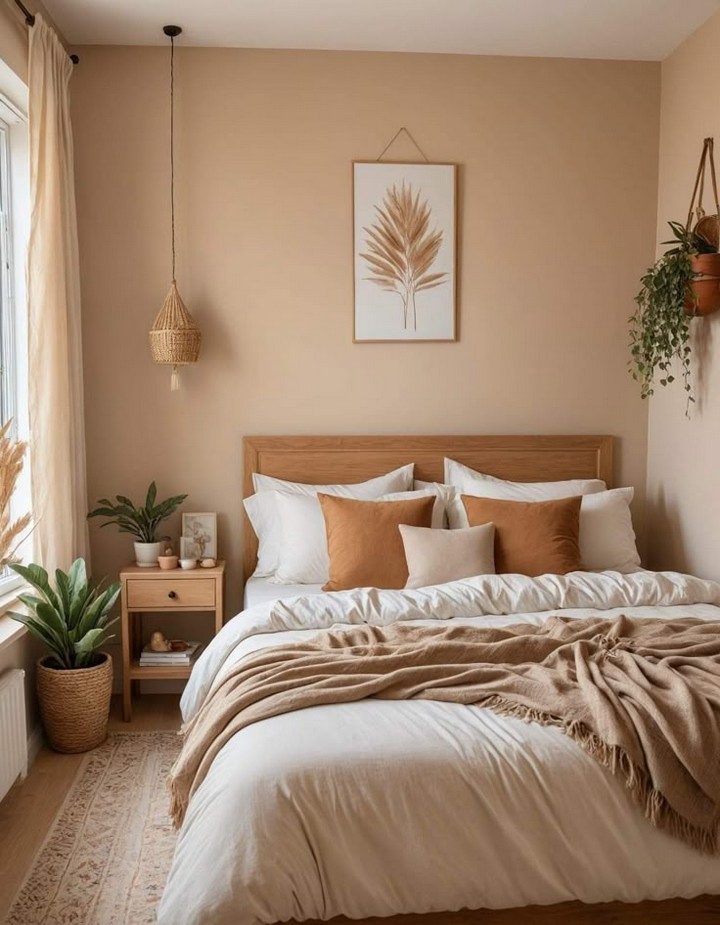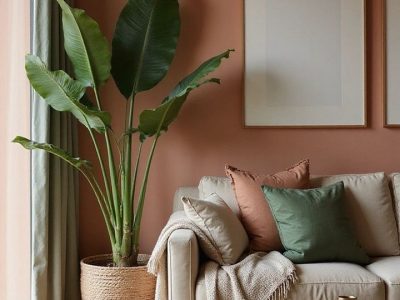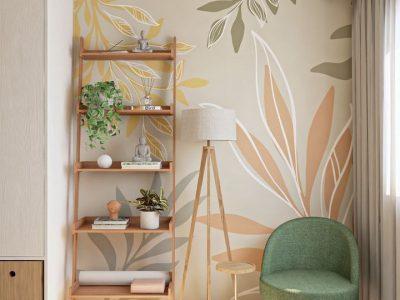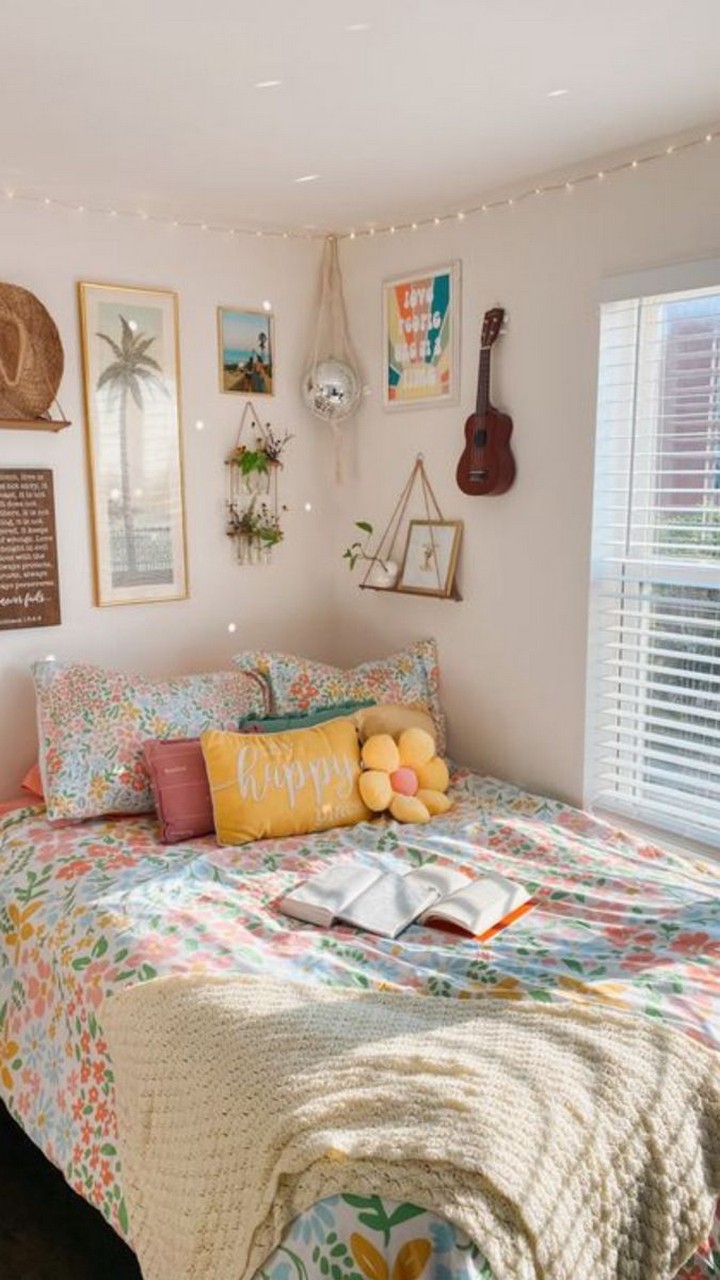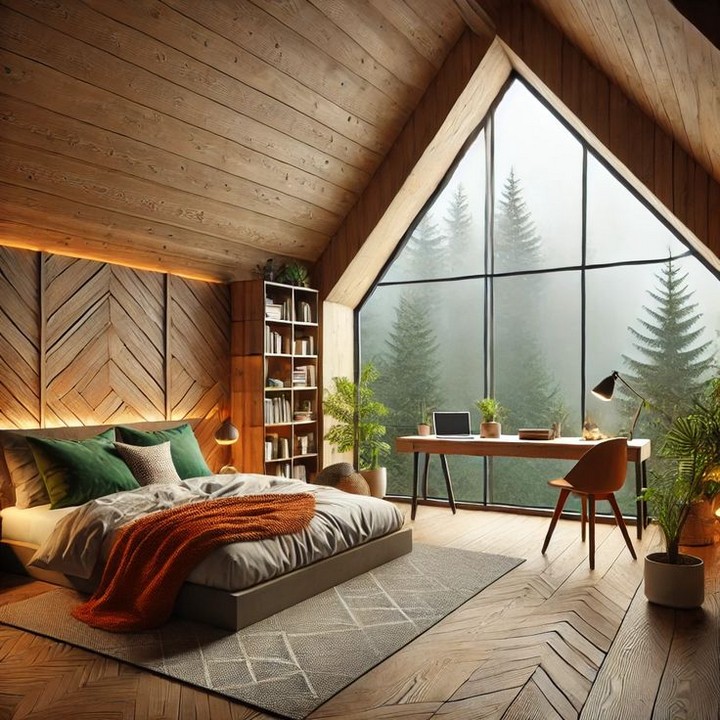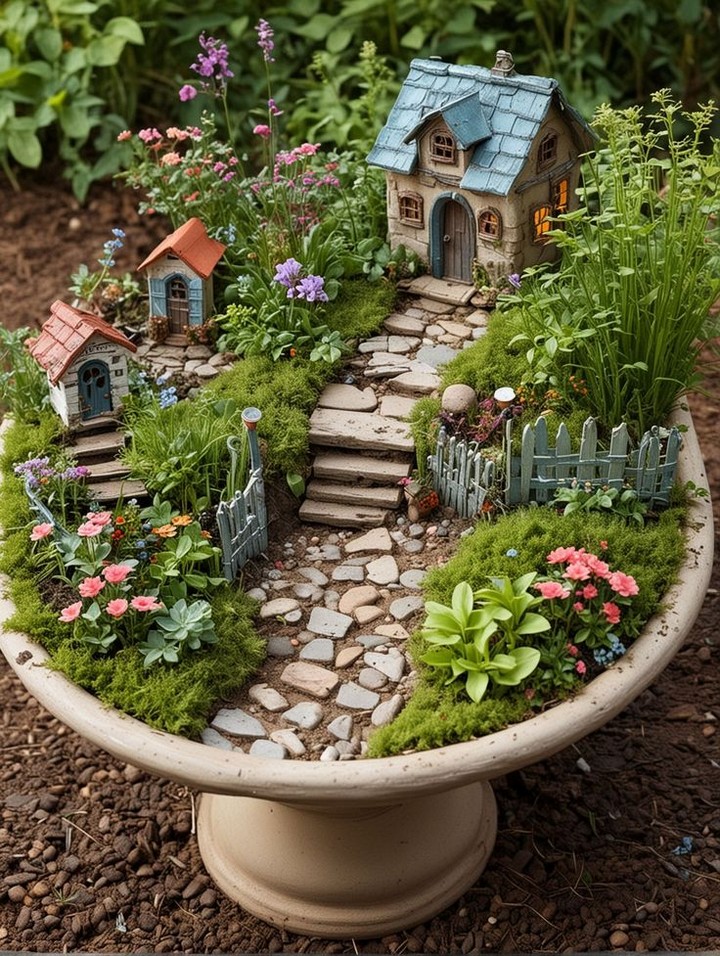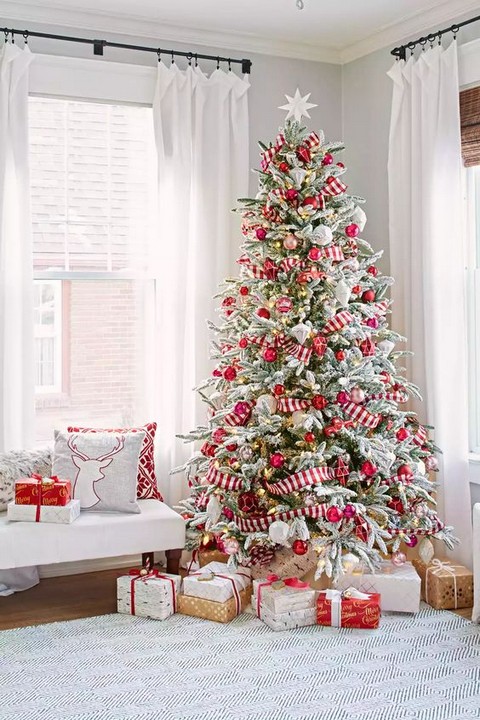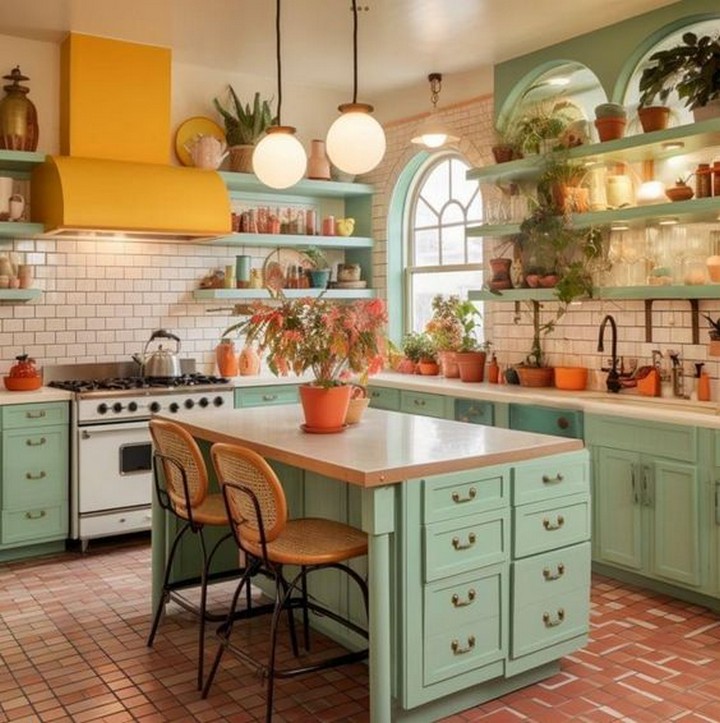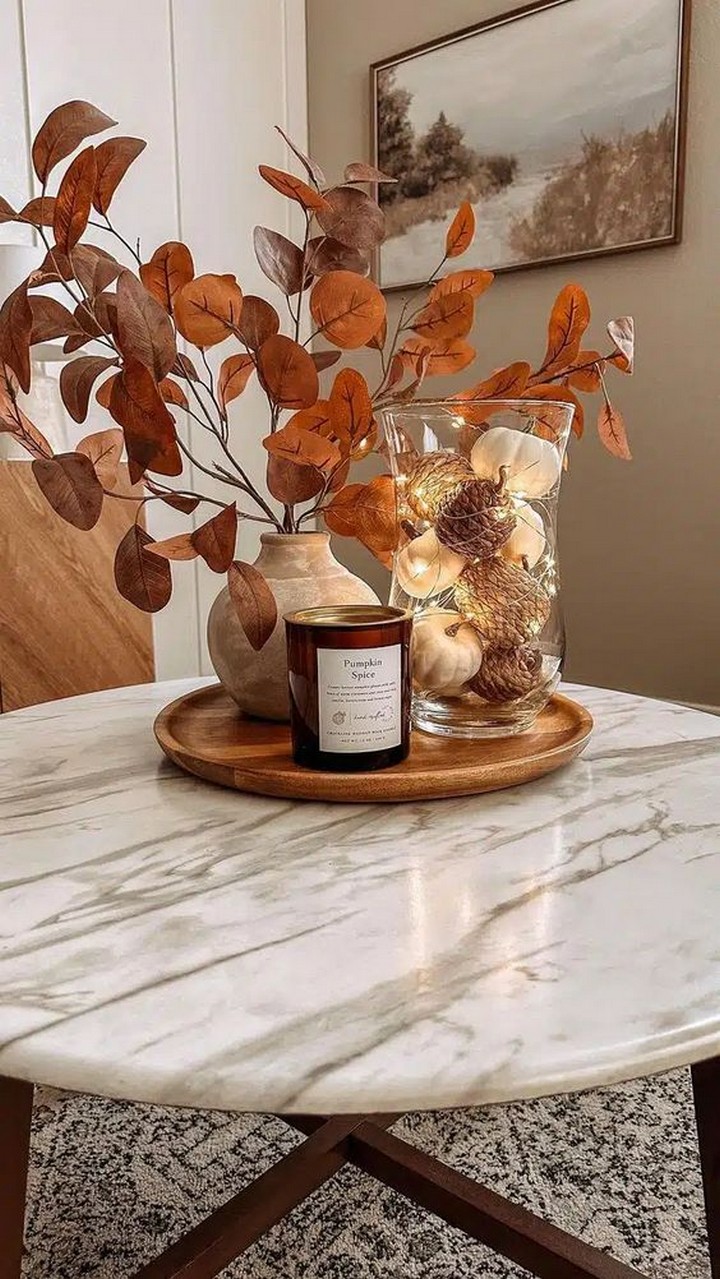The bedroom is more than just a place to sleep it’s a sanctuary where we begin and end each day. The colors that surround us in this intimate space can profoundly impact our mood, sleep quality, and overall well-being. Warm colors, with their inviting and comforting qualities, have long been favored for creating cozy, relaxing bedroom environments.
In this comprehensive guide, we’ll explore 35 warm bedroom colors across various palettes from gentle neutrals to bold statements that can transform your sleeping space into the perfect retreat. We’ll dive into how these colors affect mood, which combinations work best together, and provide practical tips for incorporating them into your bedroom design.
Warm colors occupy the red, orange, and yellow segments of the color wheel, along with their various tints, tones, and shades. These colors evoke feelings of comfort, intimacy, and energy making them particularly suitable for bedrooms where relaxation is paramount.
Soft Neutrals: The Foundation of Warm Bedrooms
1. Creamy White
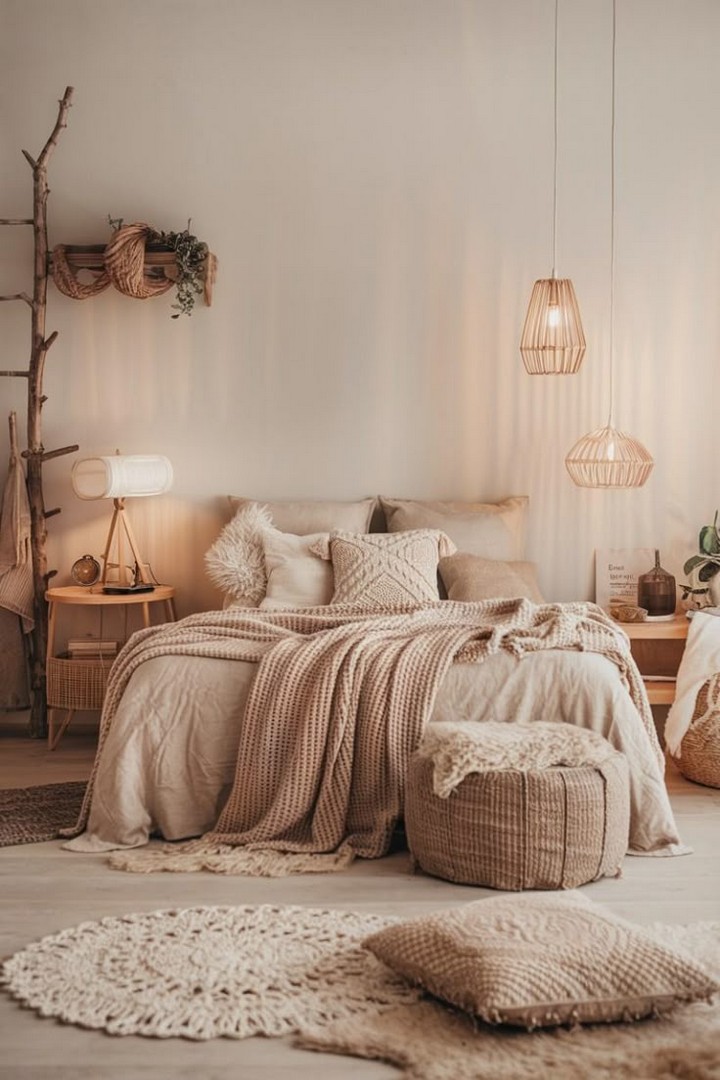
Not all whites are cool. Creamy white carries subtle yellow undertones that create warmth without overwhelming the space. This versatile neutral works beautifully as a base color in any bedroom, allowing for endless accent possibilities.
2. Warm Greige

The perfect marriage of gray and beige, warm greige brings sophistication with underlying warmth. This contemporary neutral adapts to different lighting conditions, appearing more beige in warm light and more gray in cooler light.
3. Linen White
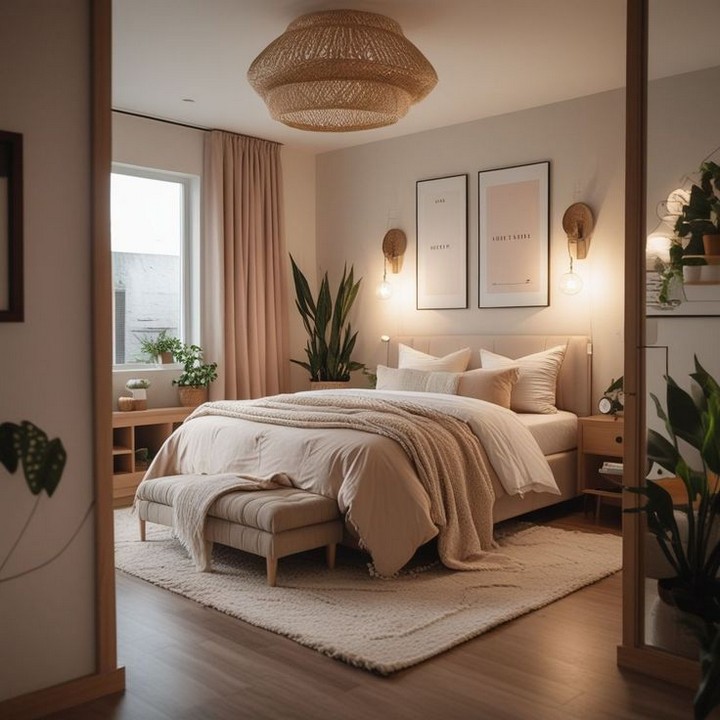
With its subtle depth and texture, linen white offers more character than pure white while maintaining an airy, warm feeling. It’s perfect for creating a serene, light-filled bedroom retreat.
4. Alabaster

This soft, chalky white with yellow undertones brings a gentle luminosity to bedroom walls. Alabaster creates an elegant backdrop that works particularly well with natural materials like wood and rattan.
5. Warm Taupe
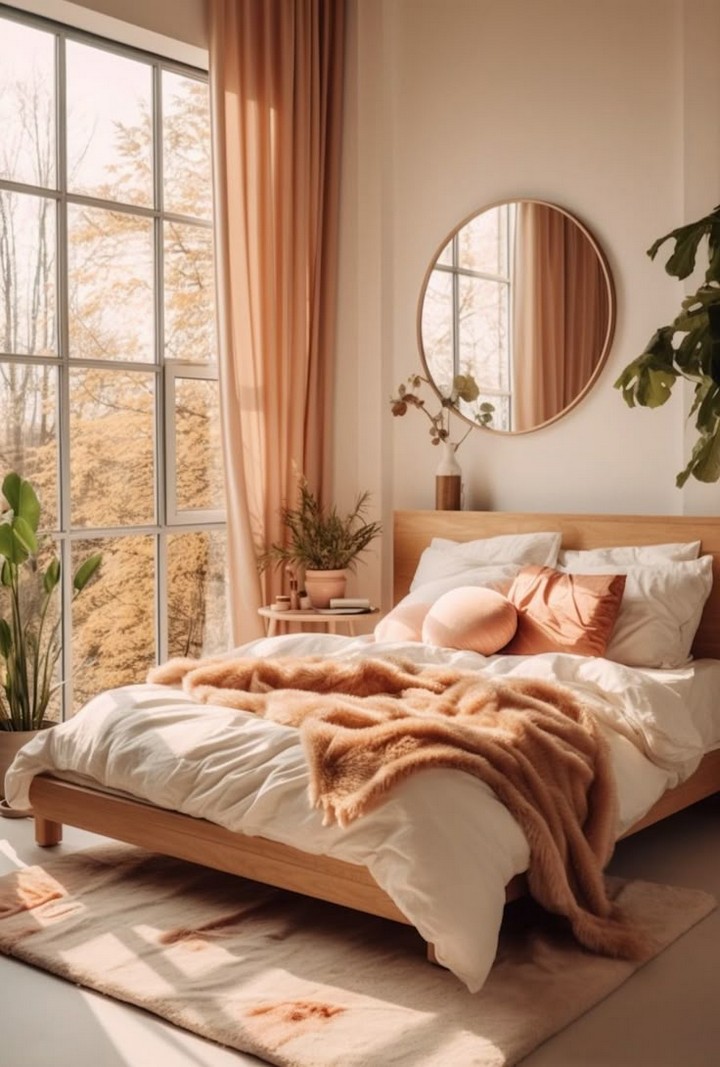
A versatile mid-tone neutral, warm taupe combines the sophistication of gray with the warmth of brown. This color adapts beautifully to different design styles and provides a soothing foundation for layering textures.
6. Mushroom
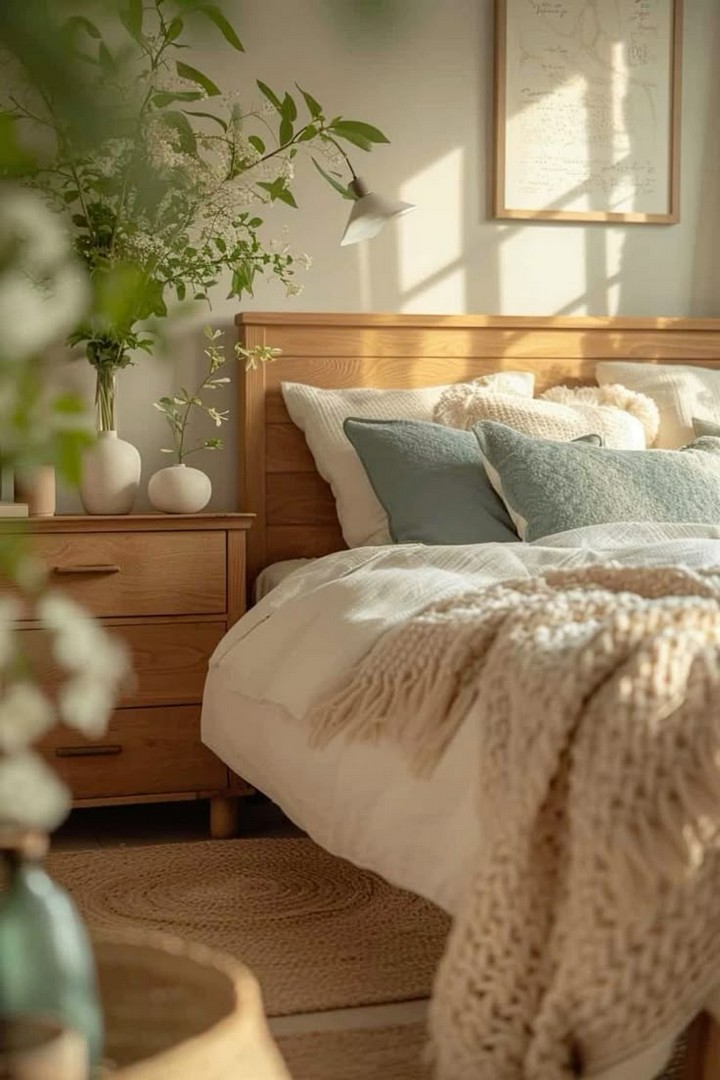
This earthy neutral has risen in popularity for its subtle complexity. Mushroom offers depth without heaviness, working wonderfully in bedrooms with natural light and organic elements.
7. Putty
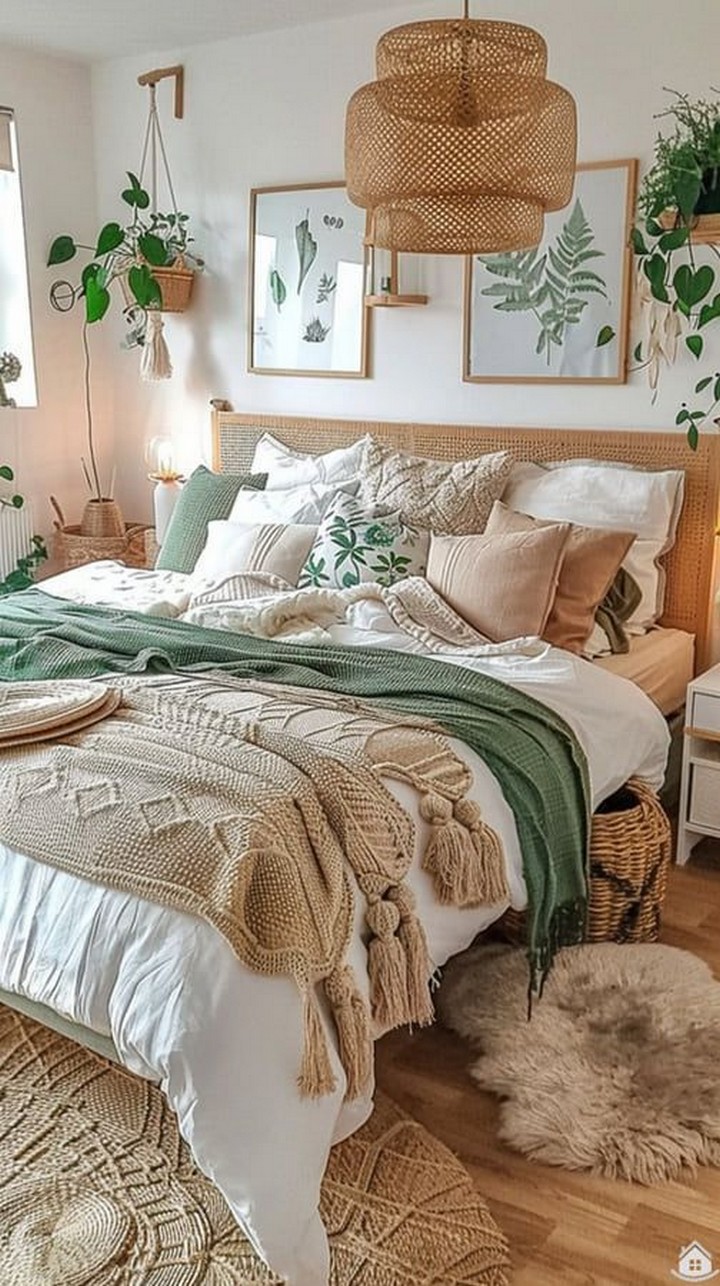
A soft, muted neutral with warm undertones, putty provides more depth than lighter neutrals while maintaining a restful ambiance. It pairs beautifully with both cool and warm accents.
Gentle Earth Tones: Grounded and Reassuring
8. Warm Sandstone
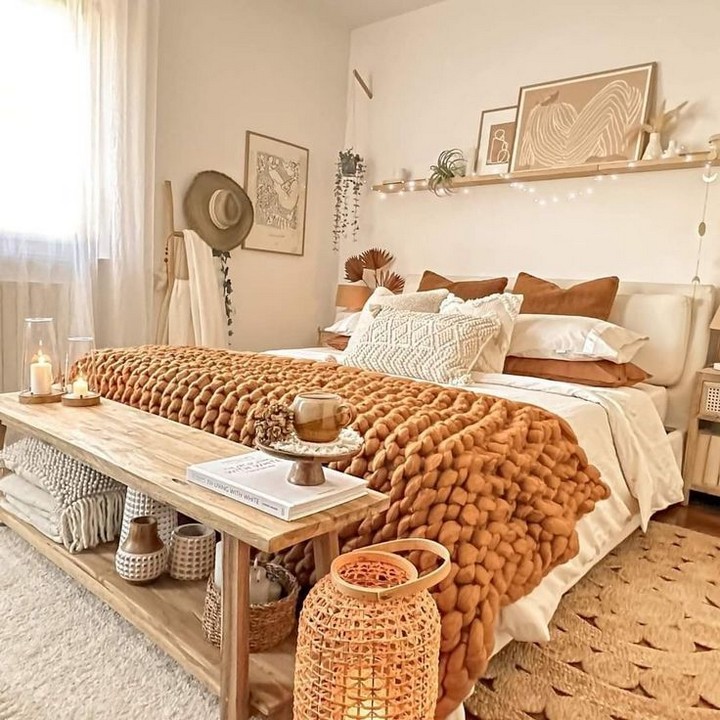
Reminiscent of sun-warmed desert landscapes, warm sandstone brings natural serenity to bedrooms. This color creates an inviting backdrop that enhances wood tones and botanical accents.
9. Terracotta
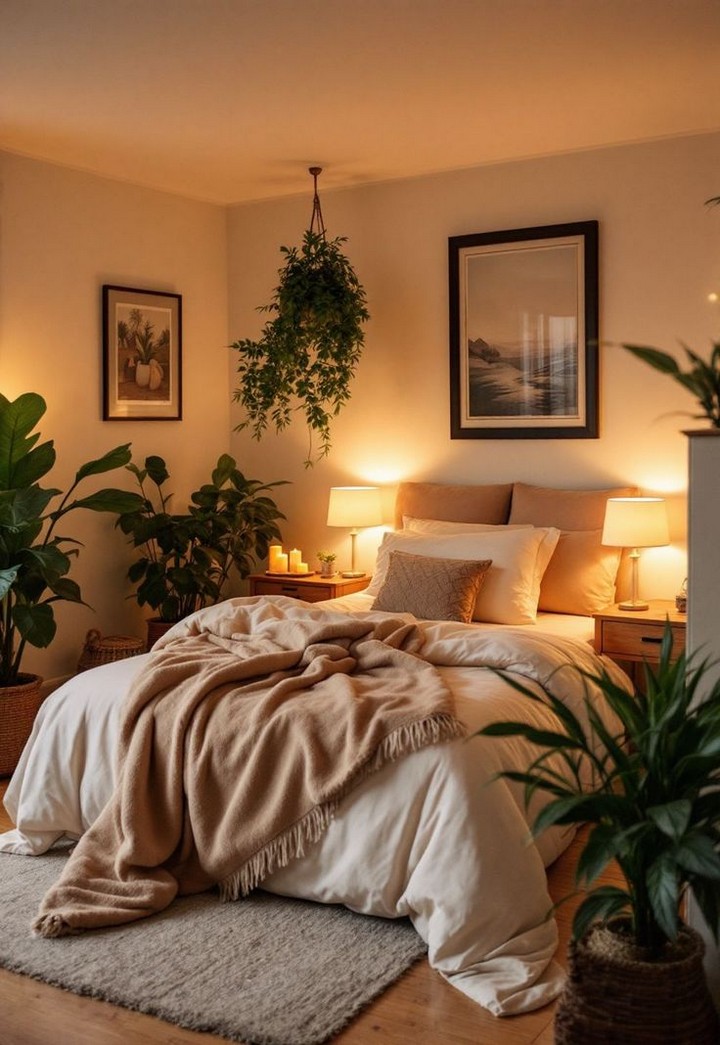
This classic earth tone has made a strong comeback in interior design. Modern terracotta interpretations range from subtle blush-tinged hues to deeper clay tones, all bringing warmth and character to bedroom spaces.
10. Caramel
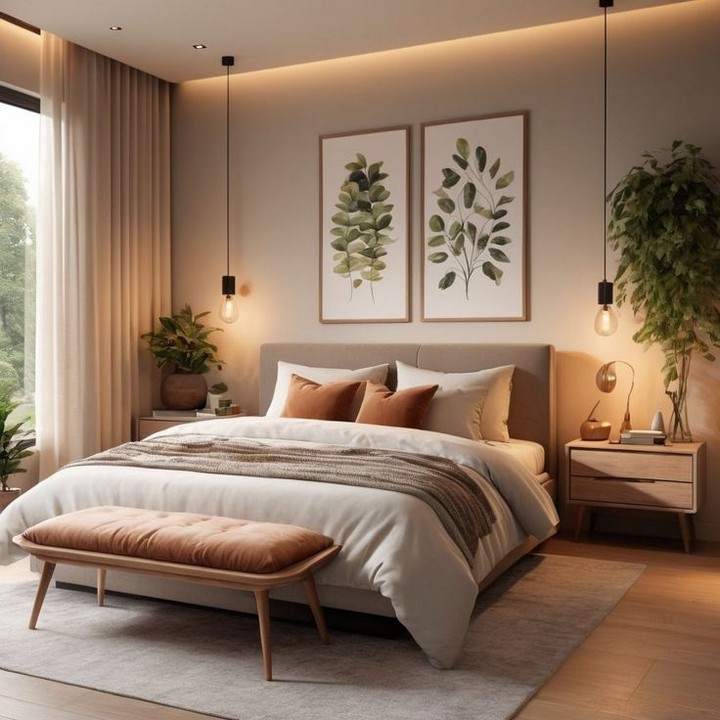
Rich and inviting, caramel brings depth and warmth without the heaviness of darker browns. This versatile tone works well on accent walls or as a whole-room color in bedrooms with ample natural light.
11. Tobacco Brown
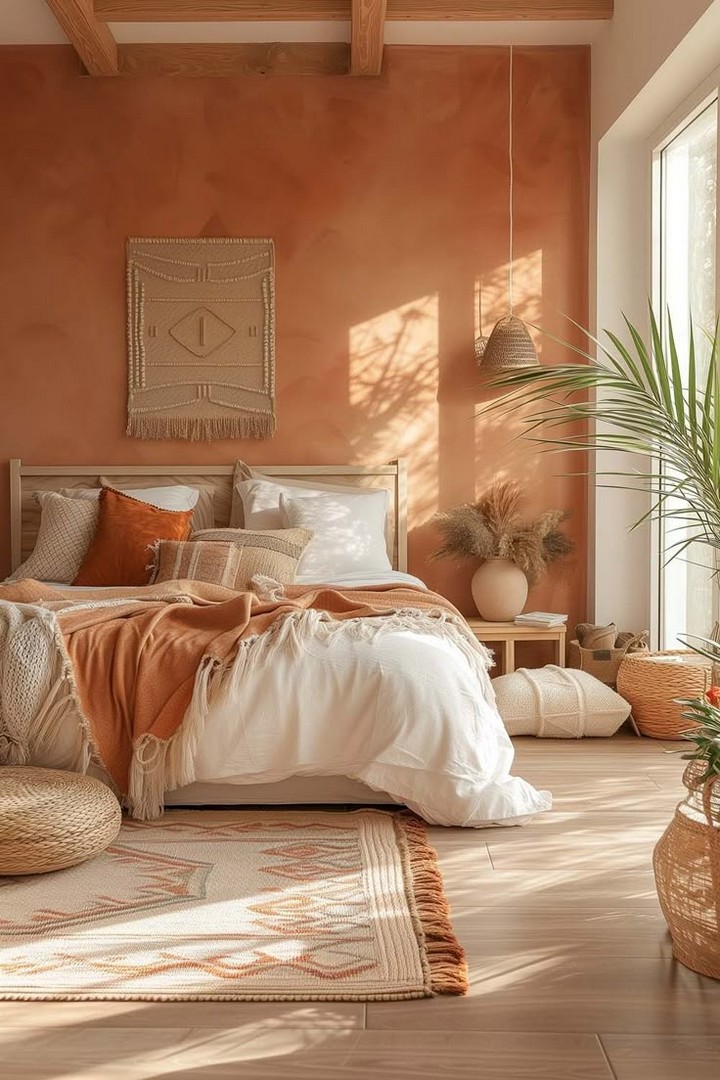
For a more masculine or dramatic approach, tobacco brown offers rich, enveloping warmth. This sophisticated color creates a cocoon-like effect, especially appealing in bedrooms where deep relaxation is the goal.
12. Warm Olive
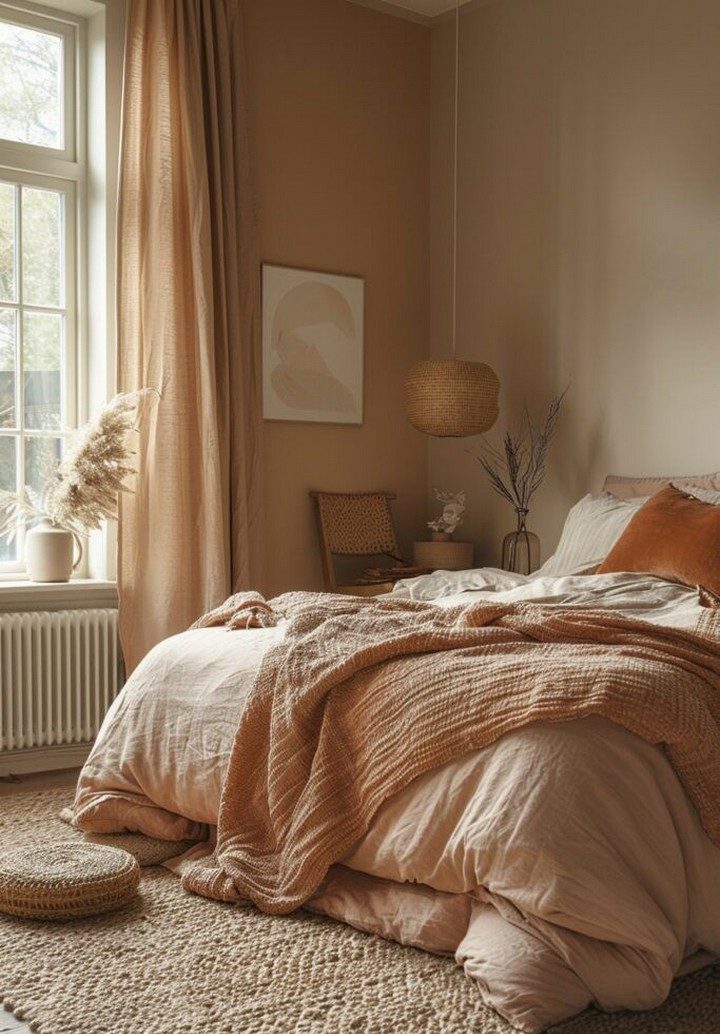
This earthy green carries enough yellow undertones to place it firmly in the warm color family. Warm olive connects interior spaces to nature while providing a grounding energy to bedroom environments.
13. Clay
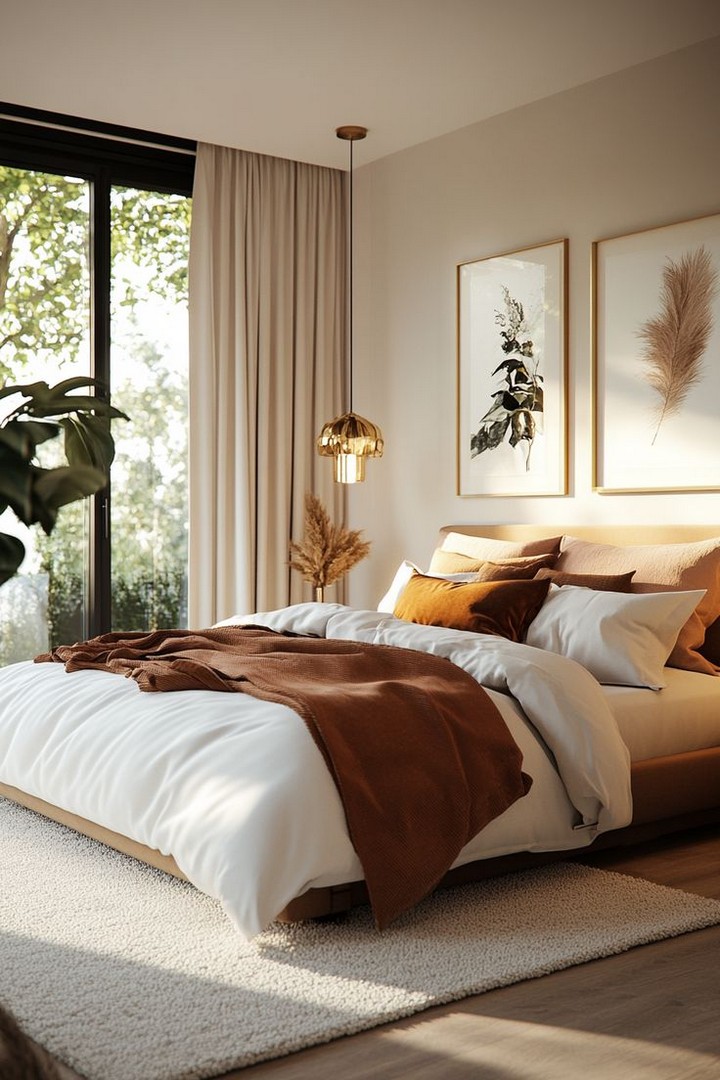
A beautiful middle ground between terracotta and taupe, clay offers earthy sophistication with warm undertones. This color works particularly well in bedrooms with natural textures and materials.
14. Amber

Drawing inspiration from fossilized tree resin, amber brings a golden-brown warmth that feels both timeless and on-trend. This color creates a cozy backdrop for layered textiles and wood accents.
Soft Pinks and Corals: Subtle Warmth with Character
15. Blush Pink
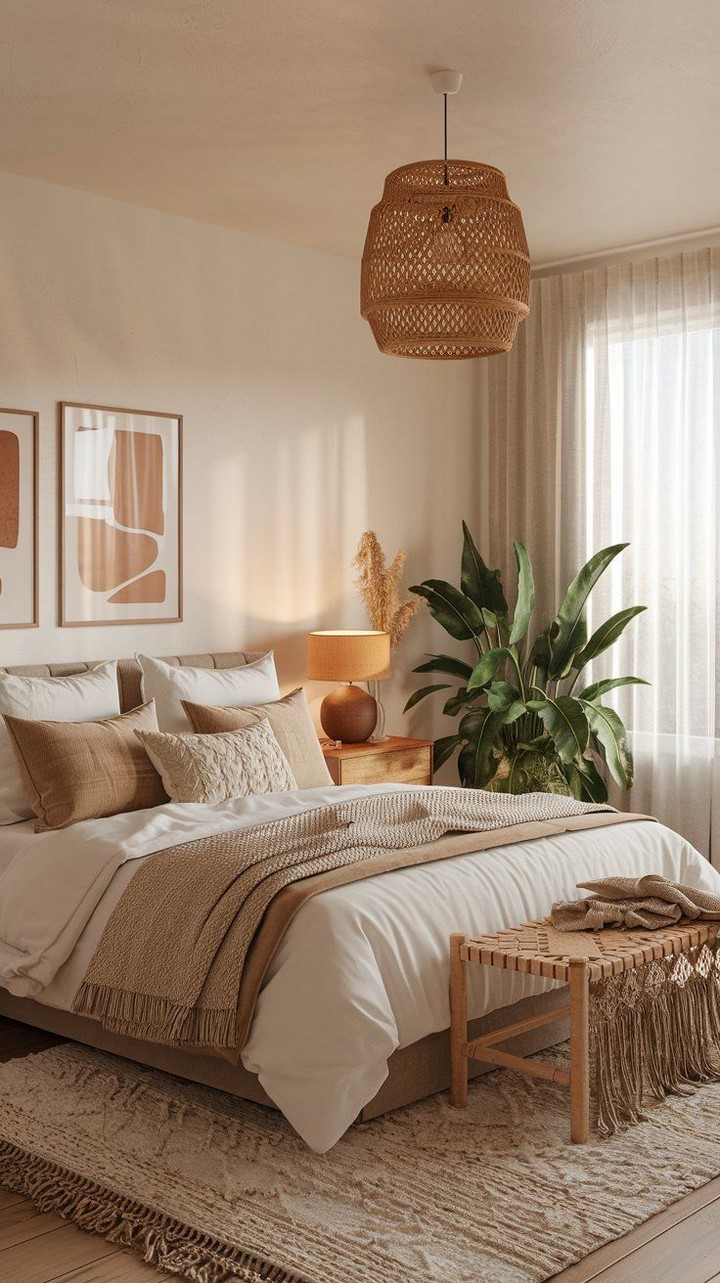
No longer relegated to children’s rooms, sophisticated blush pink has earned its place in adult bedrooms. This barely-there pink adds warmth without overwhelming, creating a subtle glow that flatters all skin tones.
16. Dusty Rose
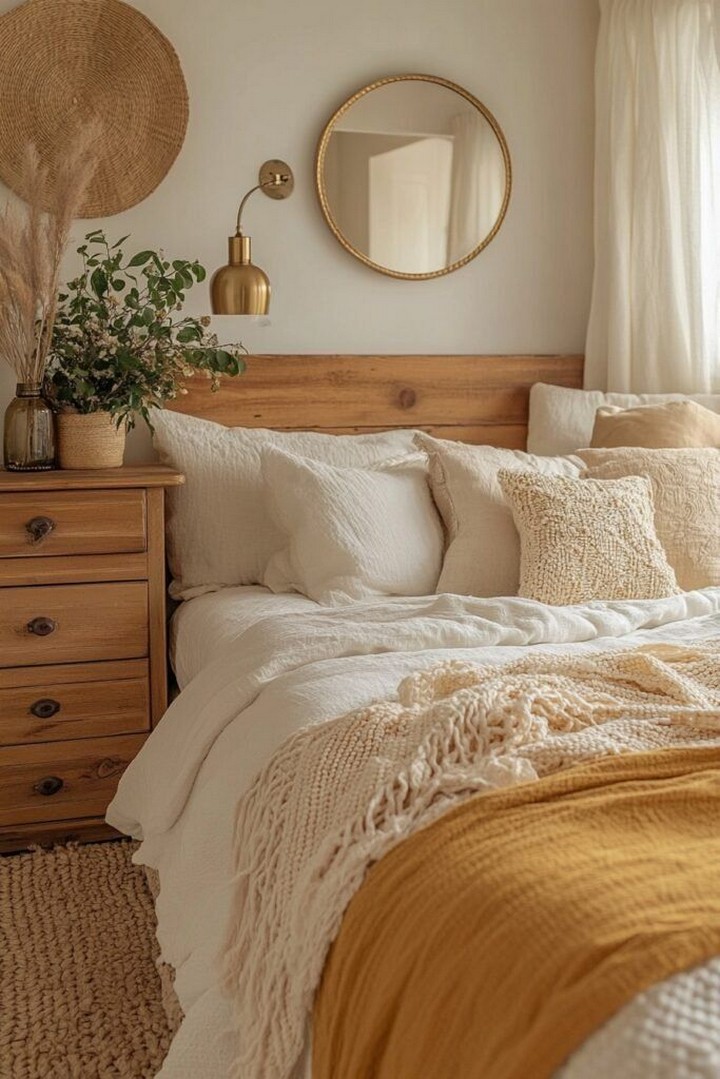
More muted than traditional pink, dusty rose offers vintage charm with modern appeal. This color brings warmth without being too feminine, working beautifully in both traditional and contemporary bedrooms.
17. Salmon
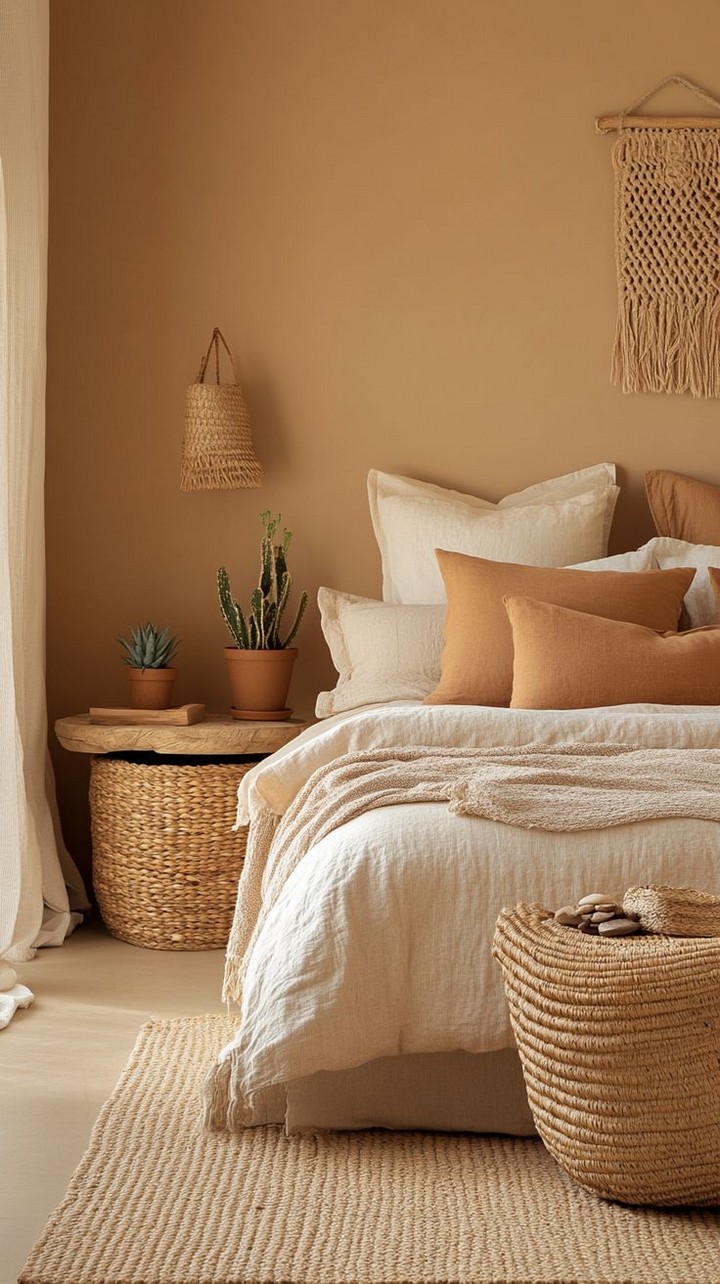
This soft, reddish-pink evokes the warmth of sunset. Salmon creates an energizing yet soothing atmosphere, perfect for bedrooms that double as morning yoga or meditation spaces.
18. Peach
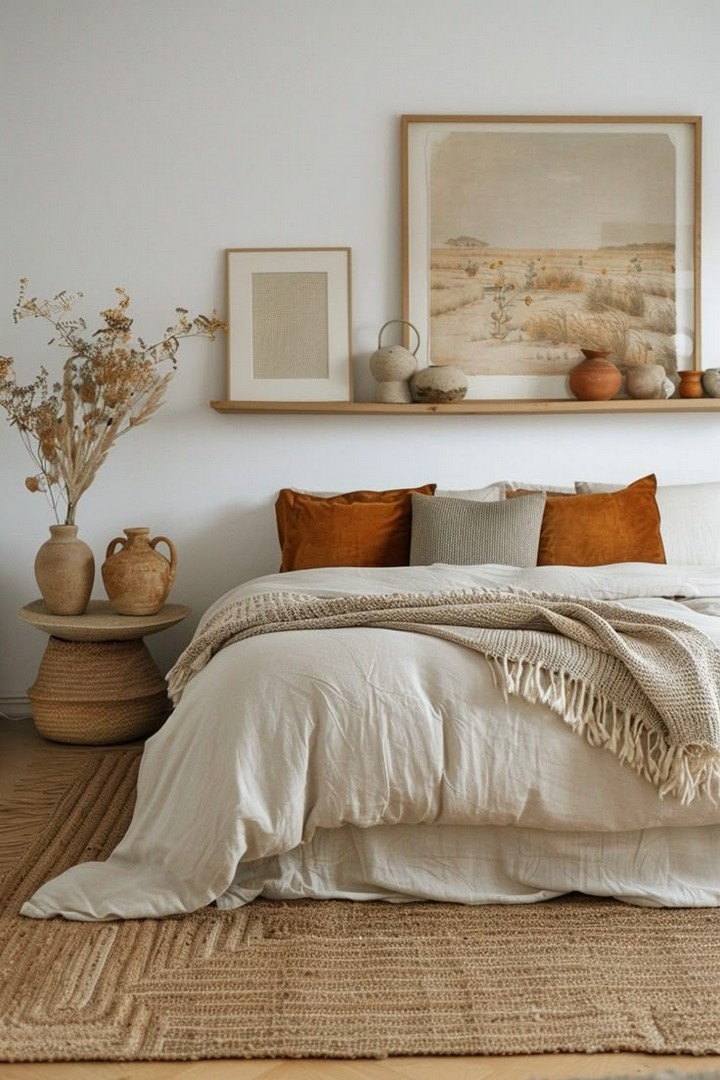
Gentle and uplifting, peach combines the energy of orange with the softness of pink. This color creates a subtle warm glow in bedrooms, complementing many skin tones and enhancing the morning light.
19. Terra Rosa
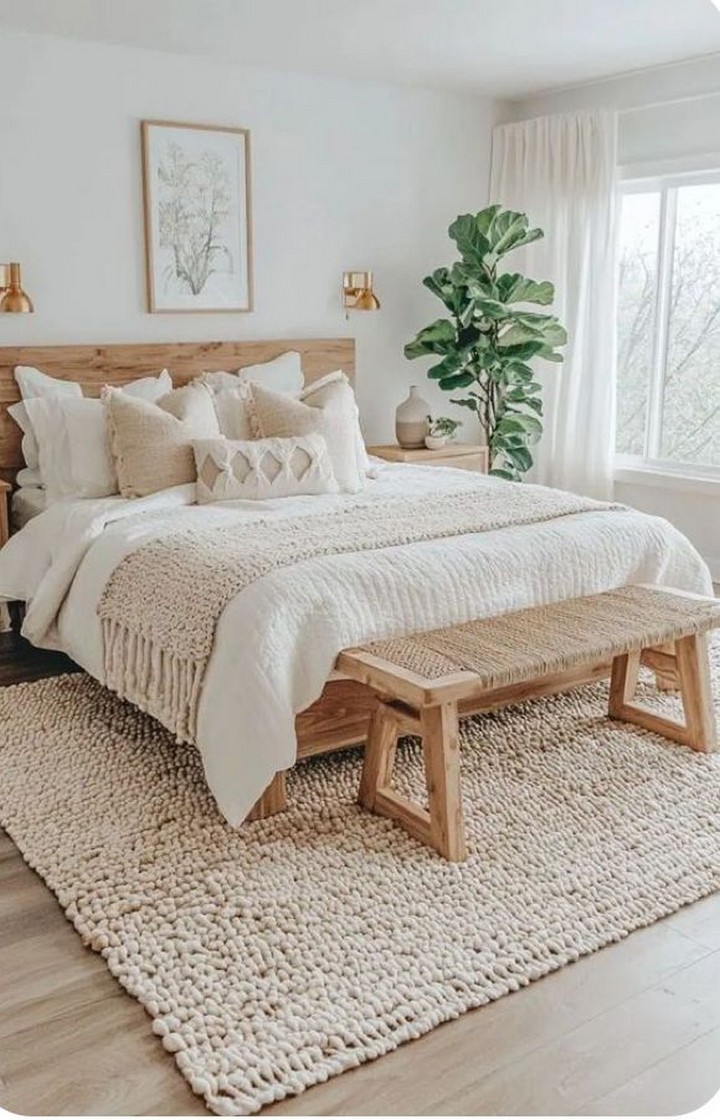
This sophisticated pink-tinted earth tone brings character and warmth without being overly feminine. Terra rosa works beautifully with natural materials and creates a grounding environment for rest.
20. Coral
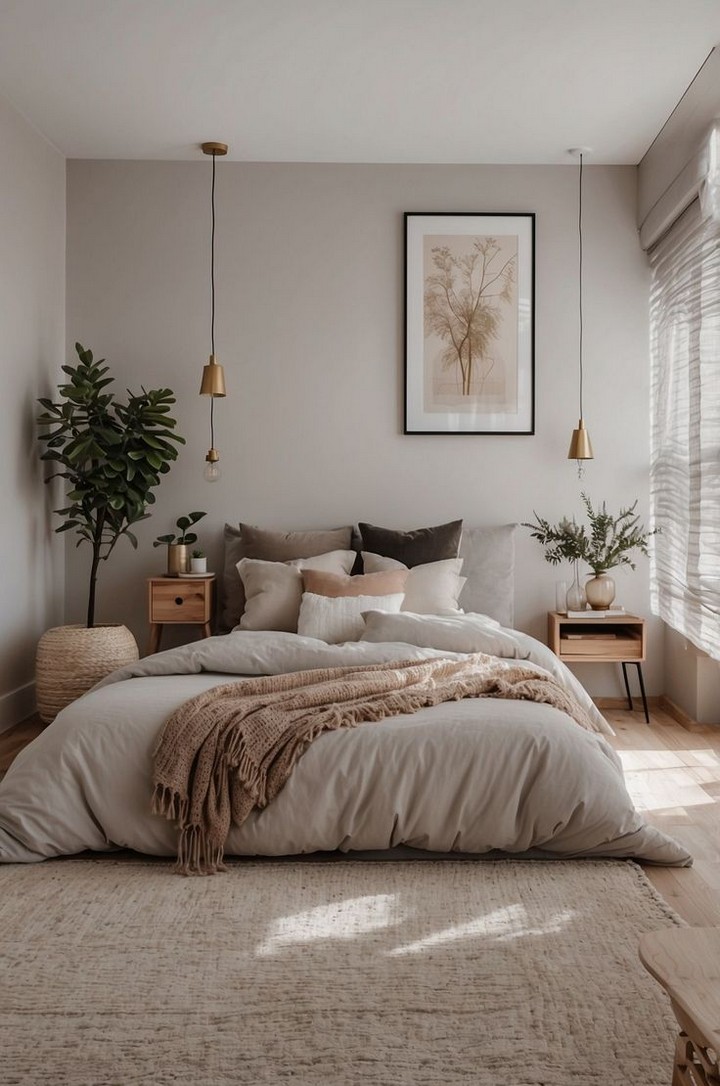
More vibrant than its subtle cousins, coral injects energy and optimism into bedroom spaces. This color works particularly well as an accent wall or in textiles against more neutral backgrounds.
21. Clay Pink
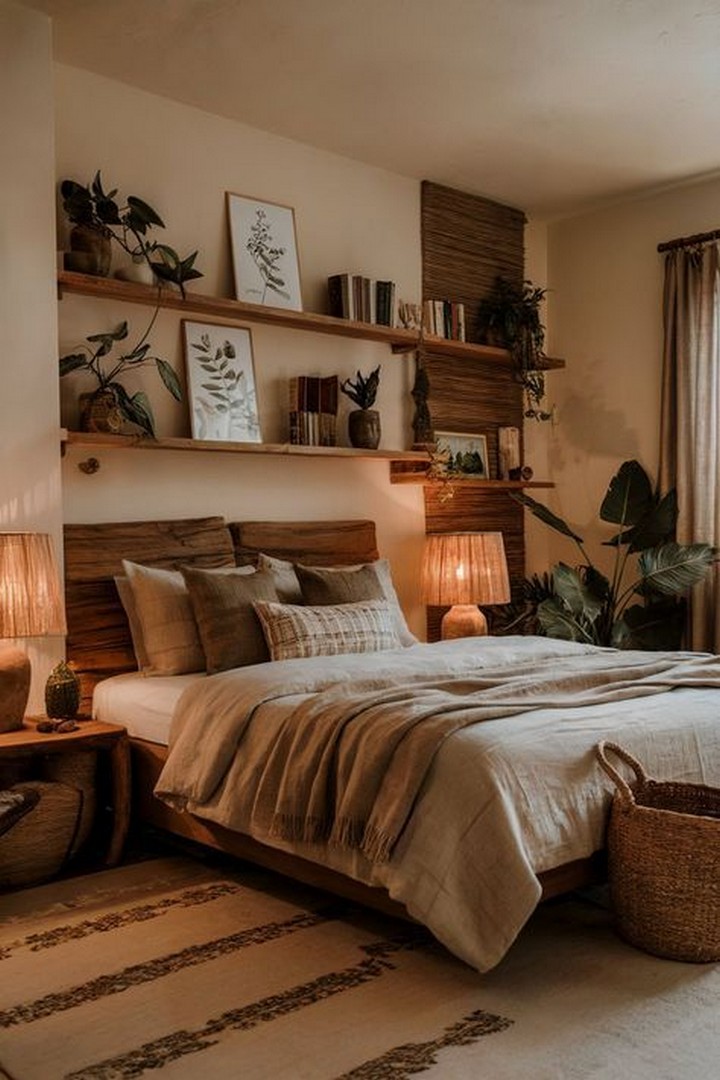
This complex pink with earthy undertones bridges the gap between blush and terracotta. Clay pink offers depth and interest while maintaining a soft, restful quality ideal for bedrooms.
Golden Yellows and Ambers: Sunshine and Warmth
22. Buttercream
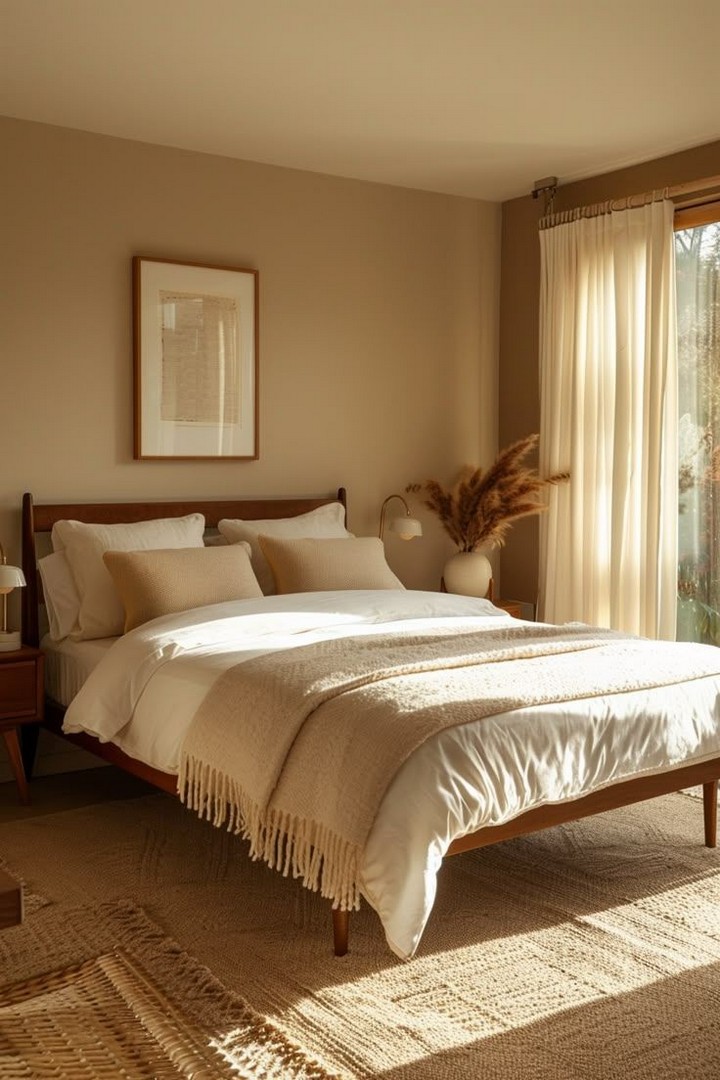
This soft, buttery yellow brings subtle sunshine into bedroom spaces without overwhelming. Buttercream creates a gentle glow that’s particularly welcoming in rooms with northern exposure.
23. Warm Gold
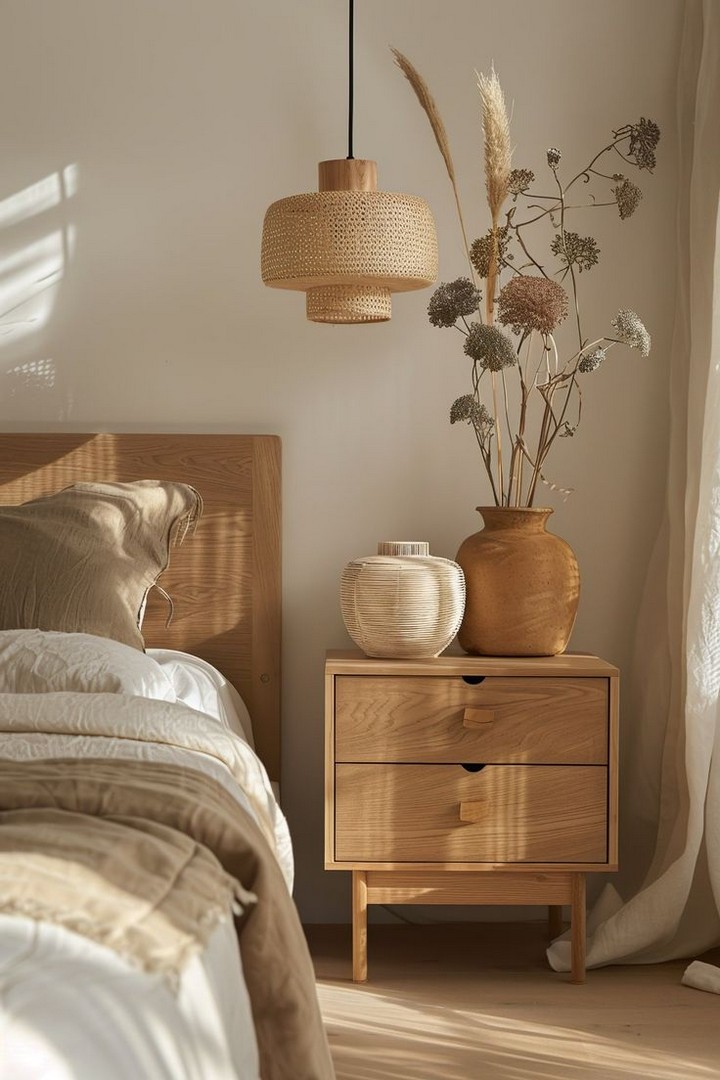
More sophisticated than bright yellow, warm gold adds richness and depth to bedroom walls. This color brings a subtle luminosity that enhances both modern and traditional bedroom styles.
24. Honey
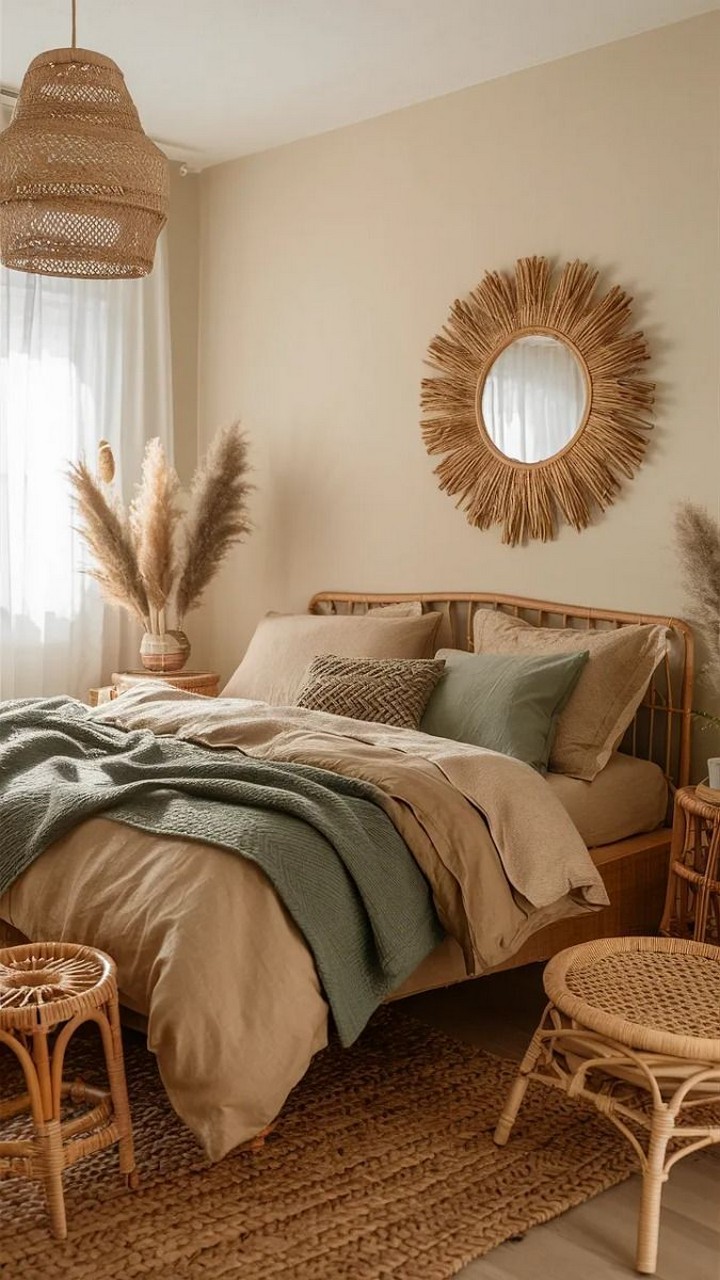
With its natural sweetness and warmth, honey yellow creates an inviting bedroom atmosphere. This color pairs beautifully with wood tones and natural textiles for a cohesive, organic feel.
25. Dijon
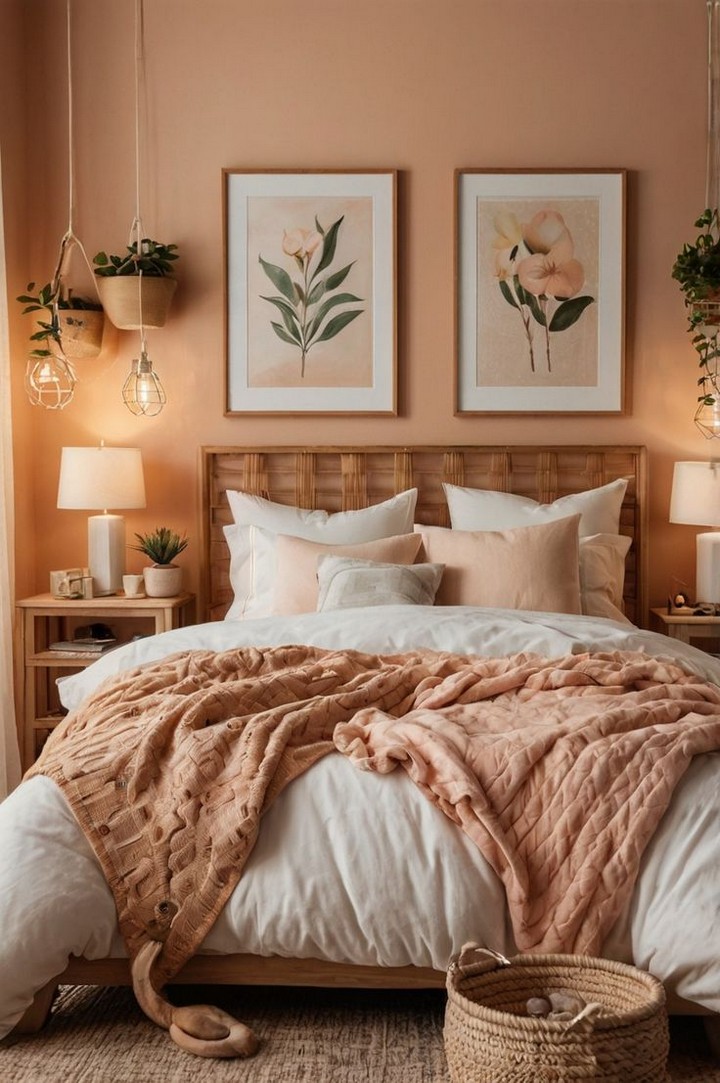
Named after the famous mustard, dijon brings a complex, sophisticated yellow with earthy undertones. This unique color choice adds character to bedroom spaces while maintaining warmth.
26. Amber Gold
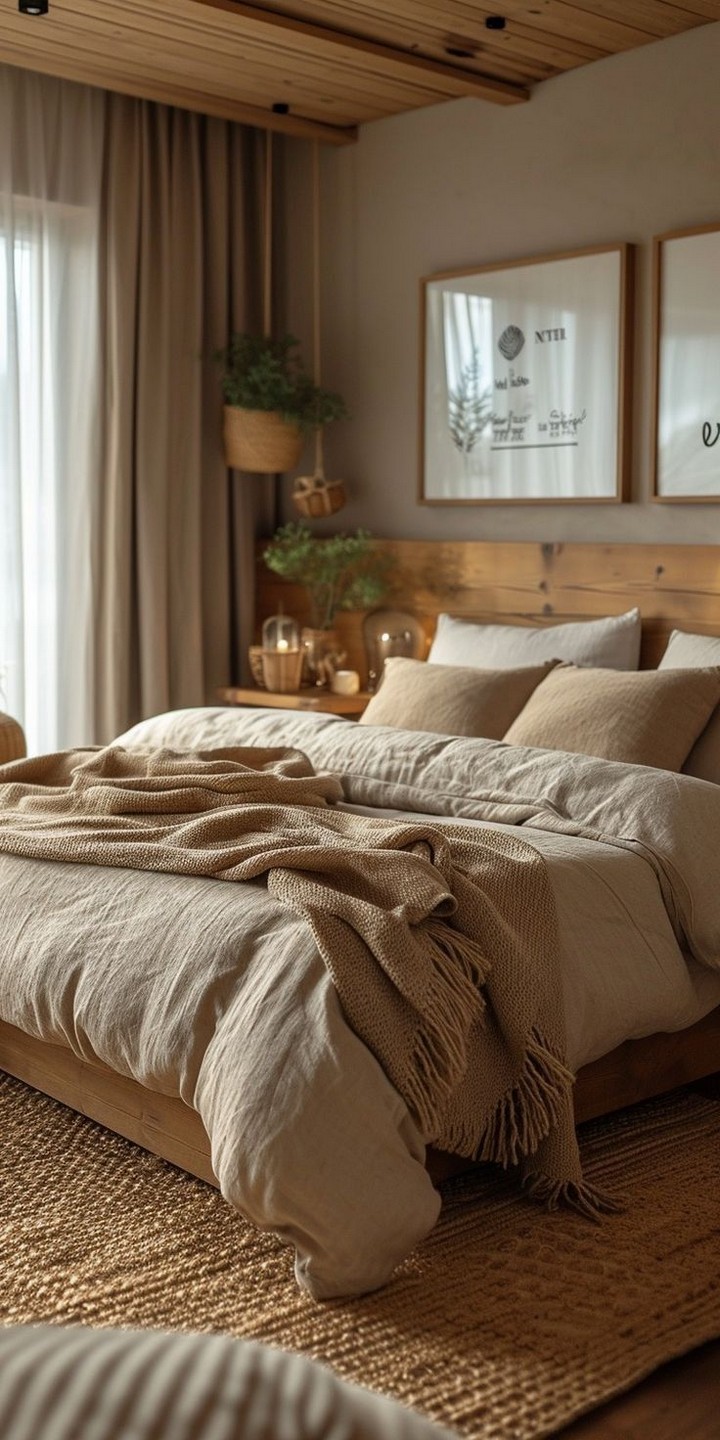
Deeper than standard yellow but still radiating warmth, amber gold brings rich, enveloping color to bedroom spaces. This hue creates a cozy atmosphere, especially appealing in bedrooms used primarily at night.
27. Warm Ochre
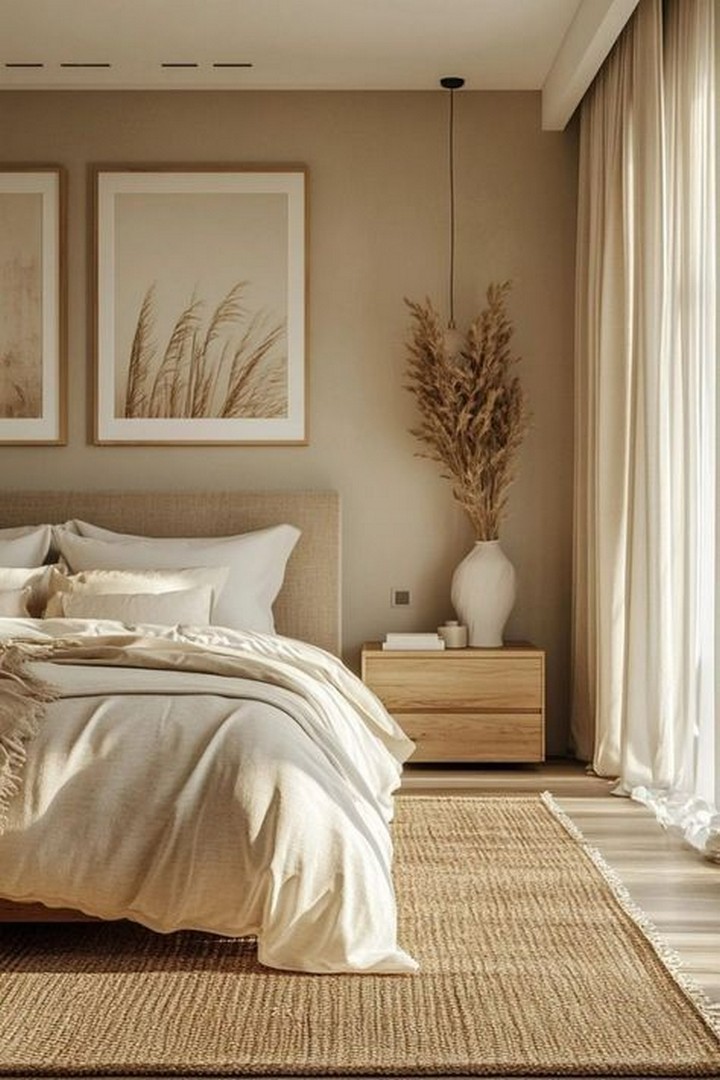
This natural yellow-brown pigment has been used in art for millennia. In bedrooms, warm ochre brings historical richness and earthy warmth that connects interior spaces to the natural world.
Spicy Oranges and Reds: Bold Comfort
28. Burnt Orange
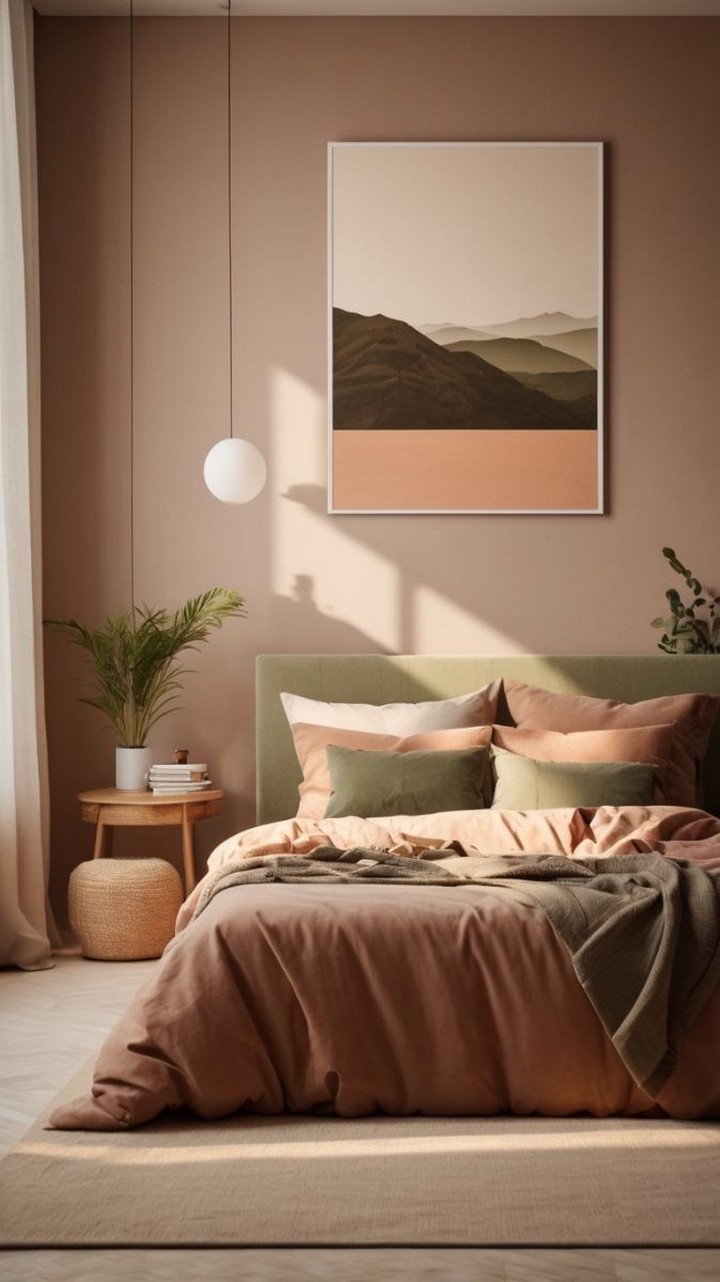
This sophisticated, muted orange brings the warmth of autumn leaves into bedroom spaces. Burnt orange creates a cozy, enveloping atmosphere without the stimulating effects of brighter oranges.
29. Cinnamon
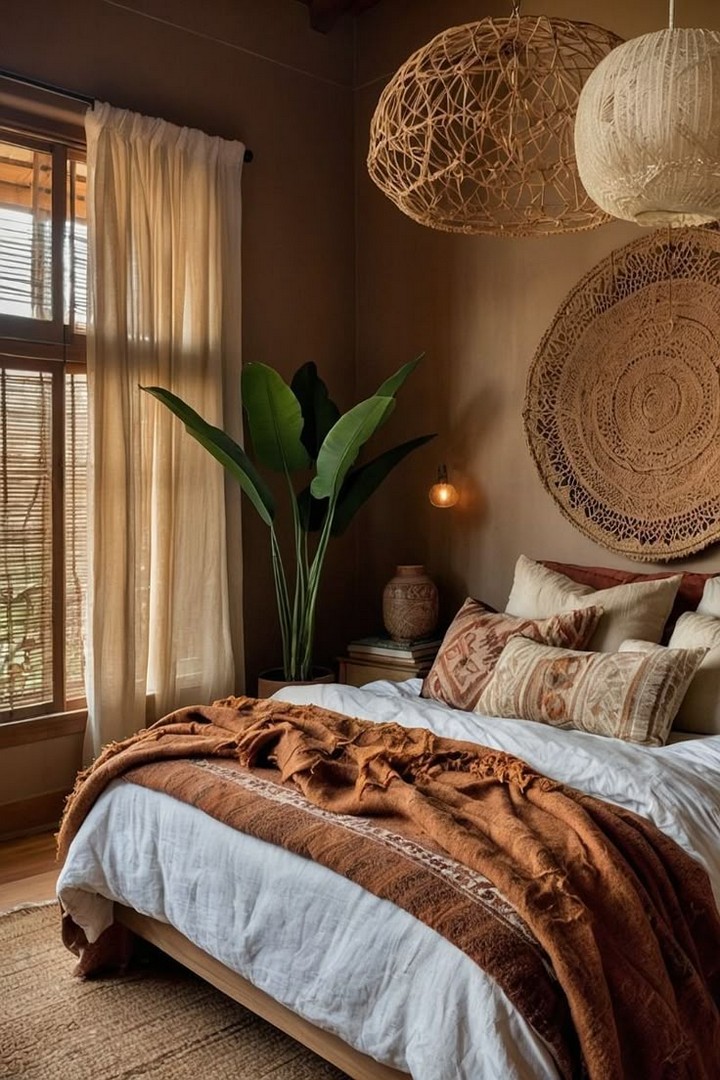
Reminiscent of the beloved spice, cinnamon brings rich, spicy warmth to bedroom environments. This complex orange-brown works beautifully as an accent wall or in textiles and decor elements.
30. Russet
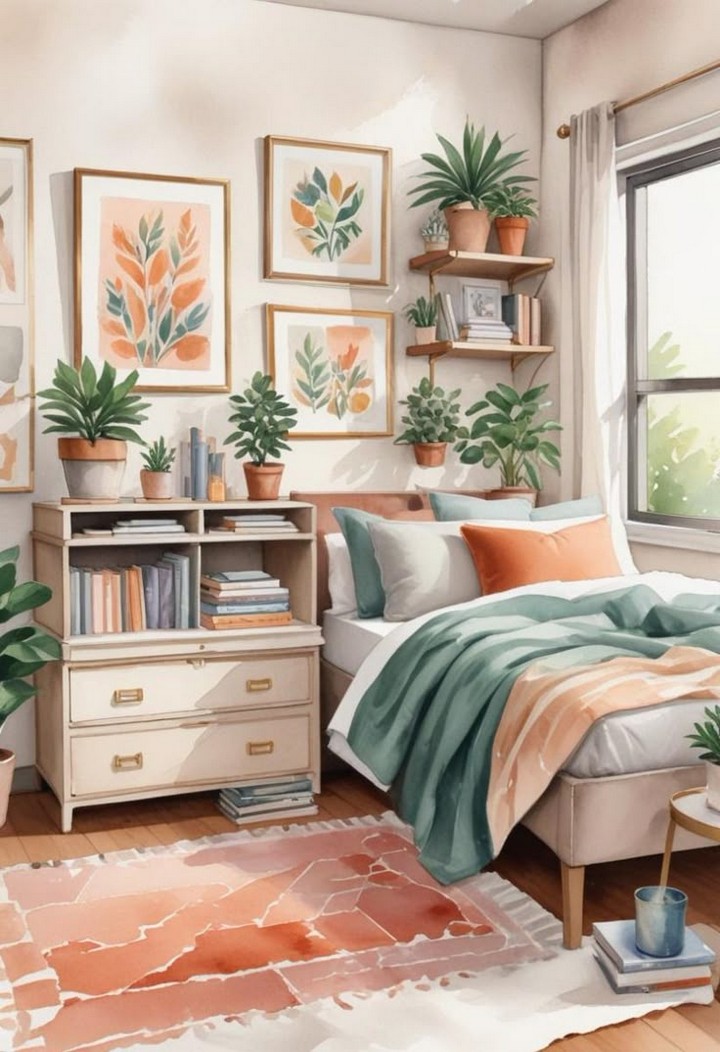
This deep reddish-brown evokes the warmth of autumn. Russet creates a dramatic yet cozy backdrop for bedroom furniture and accessories, particularly complementing wood tones and brass accents.
31. Sienna
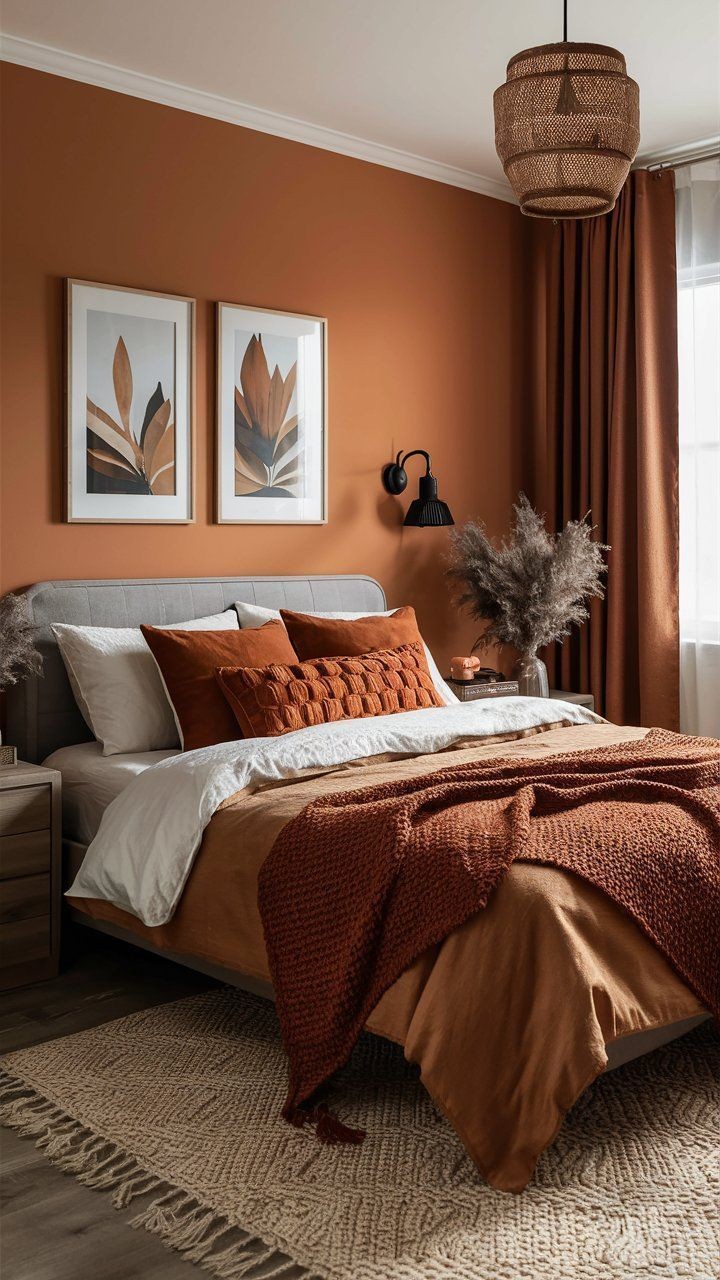
Named after the earth pigment used since ancient times, sienna brings rich, reddish-brown warmth to bedroom spaces. This color creates a grounding effect that promotes rest and relaxation.
32. Rust
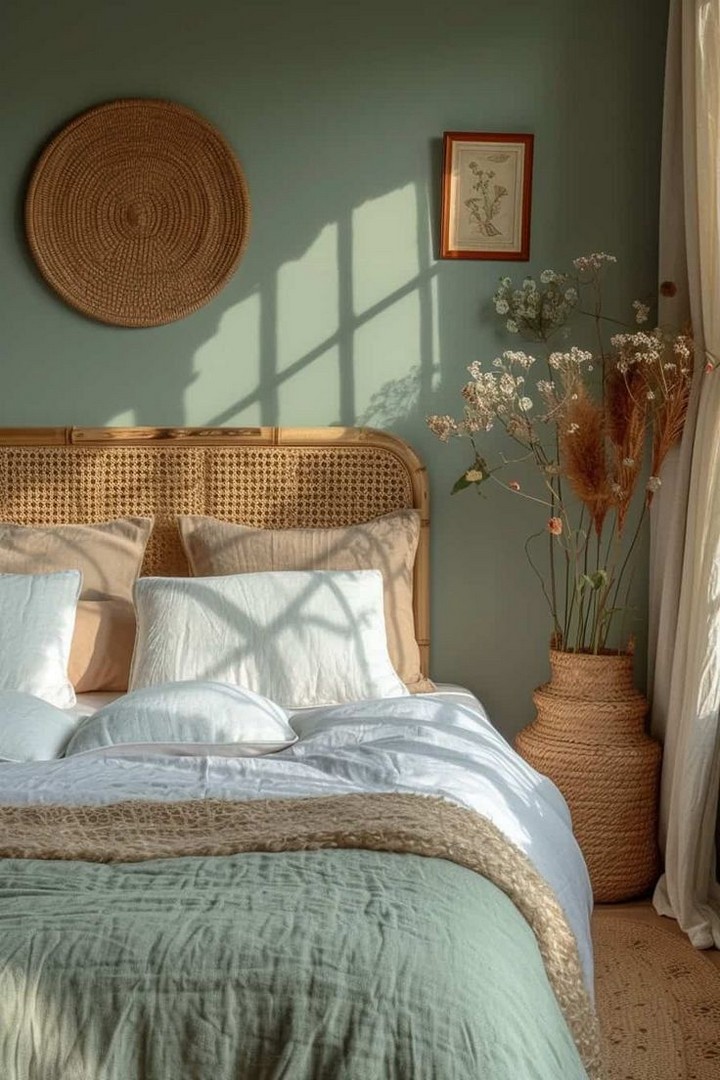
This oxidized-metal-inspired hue has become a popular choice in contemporary design. Rust brings unexpected warmth and character to bedroom spaces, working well with both minimal and maximalist aesthetics.
33. Terracotta Red
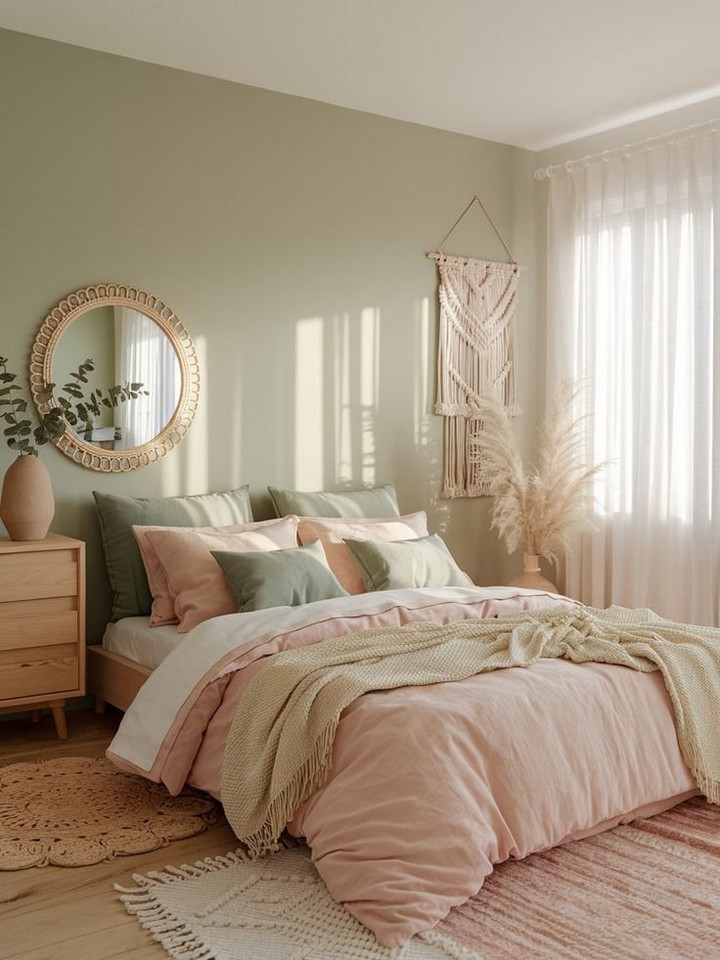
Deeper and more dramatic than standard terracotta, this rich red-orange creates a bold statement in bedroom spaces. For those seeking impact without sacrificing warmth, terracotta red delivers.
34. Paprika
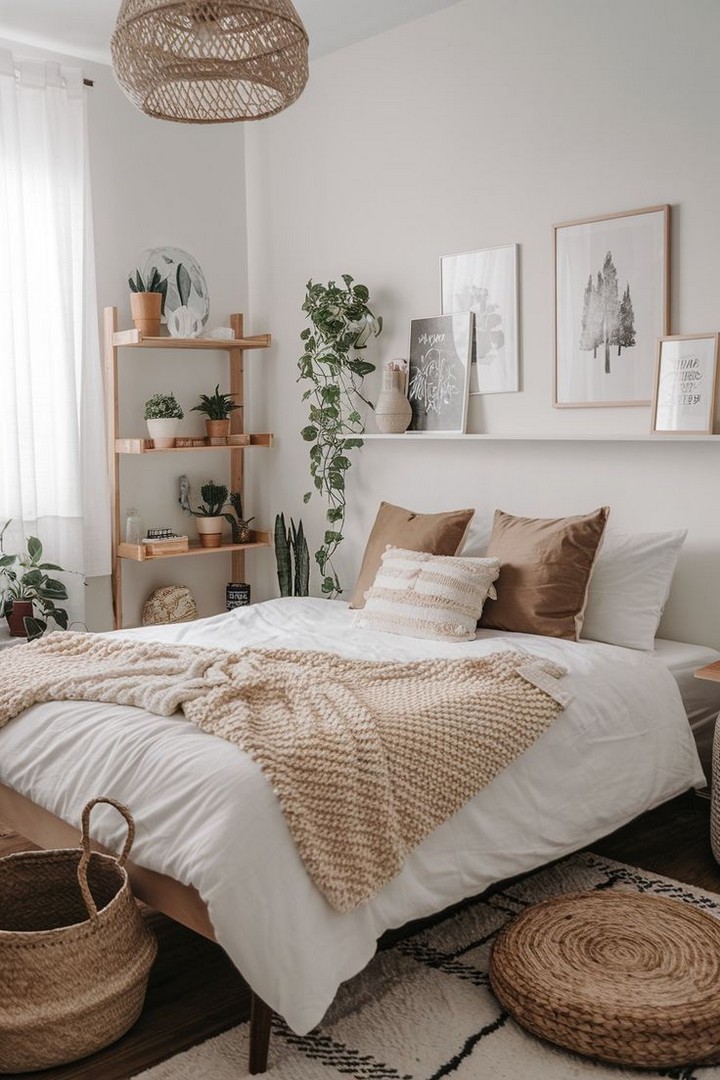
This spice-inspired red with orange undertones brings vibrant warmth to bedroom environments. Paprika works beautifully as an accent color or on a feature wall to create a focal point.
35. Burgundy
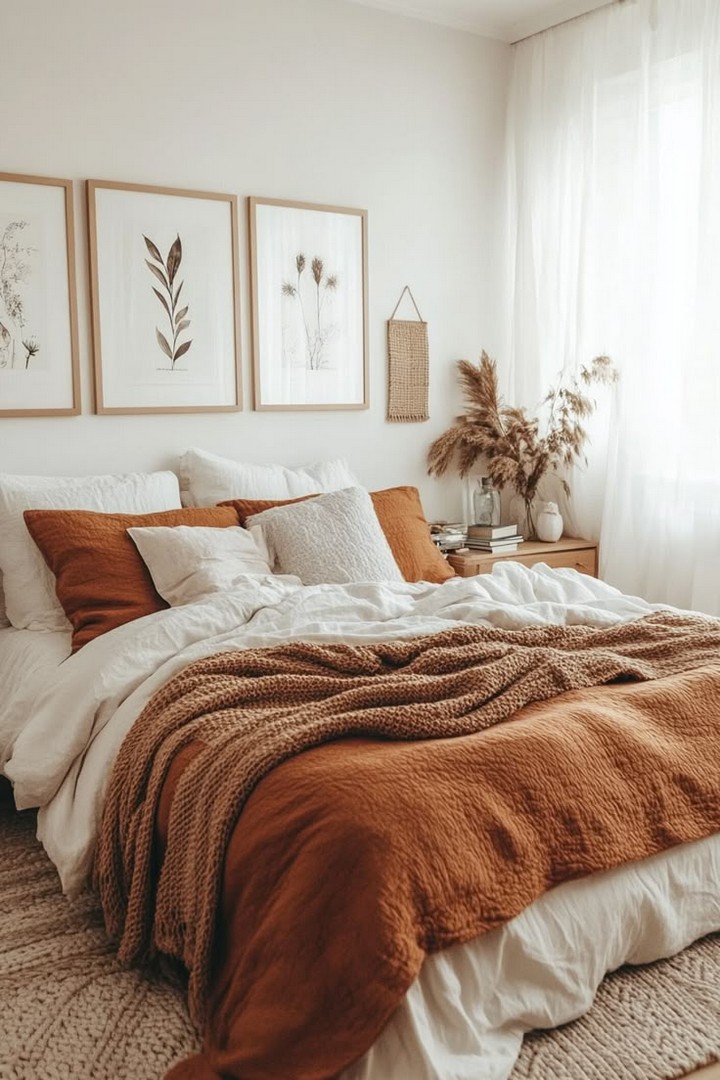
This deep, wine-inspired red brings rich, enveloping warmth to bedroom spaces. Burgundy creates a sophisticated, intimate atmosphere that’s particularly appealing in bedrooms designed for relaxation and romance.
How to Incorporate Warm Colors in Your Bedroom
Successfully integrating warm colors into your bedroom requires thoughtful consideration of lighting, space dimensions, and overall design goals. Here are some practical approaches:
Consider Light Exposure
The way natural light enters your bedroom significantly impacts how warm colors appear:
- North-facing rooms: These receive cooler, indirect light. Warm colors can counterbalance this coolness and prevent the space from feeling cold.
- South-facing rooms: These enjoy abundant warm light. Consider using softer warm tones to prevent overheating the visual temperature.
- East-facing rooms: Morning light brings warm golden tones, while afternoons are cooler. Choose warm colors that maintain their appeal throughout the day.
- West-facing rooms: These rooms receive intense afternoon light that enhances warm colors. Muted warm tones often work best to prevent overwhelming warmth.
Perfect Warm Color Combinations
Creating harmonious color schemes with warm tones can elevate your bedroom design:
- Monochromatic Warmth: Use varying shades of the same warm color family (light terracotta with deeper rust accents, for example)
- Complementary Contrast: Pair warm tones with their cool complements for balanced energy:
- Warm gold with deep purple accents
- Terracotta with navy blue elements
- Coral with teal details
- Analogous Comfort: Combine colors that sit side-by-side on the warm section of the color wheel:
- Honey yellow, peach, and soft coral
- Terracotta, rust, and warm amber
- Blush pink, salmon, and soft coral
Application Strategies by Room Feature
Walls: The largest surface in your bedroom deserves careful color consideration:
- Full room: Envelop the space in your chosen warm tone for maximum impact
- Accent wall: Create a focal point behind the bed with a deeper warm shade
- Color blocking: Combine two complementary warm tones divided horizontally or vertically
Ceiling: Often overlooked, the “fifth wall” offers creative possibilities:
- Paint ceilings a lighter version of your wall color for a cohesive feel
- Use warm whites with subtle undertones that complement your wall color
- For dramatic impact, consider a warmer, deeper tone than your walls
Trim and Architectural Features: These elements can enhance your warm color scheme:
- Classic approach: Warm white trim provides definition against warm-colored walls
- Monochromatic look: Paint trim the same color as walls for a contemporary feel
- Statement approach: Use a contrasting warm tone to highlight architectural features
Furniture and Textiles: These elements bring warmth through both color and texture:
- Bedding in layered warm tones creates visual depth
- Upholstered headboards in rich warm fabrics add textural interest
- Drapery in sheers or heavier fabrics can filter light through warm tones
Practical Tips for Working with Warm Bedroom Colors
Testing Colors Effectively
Before committing to a warm color scheme:
- Paint large swatches (at least 2′ x 2′) on multiple walls
- Observe how the color changes throughout the day in natural and artificial light
- Live with test swatches for at least 48 hours before making your final decision
Balancing Warm Colors
To prevent warm colors from becoming overwhelming:
- Incorporate cooling elements like plants, glass, or metal accents
- Balance with neutral textiles in varying textures
- Include mirrors to reflect light and prevent the space from feeling too closed-in
Creating Focus with Warm Colors
Direct attention where you want it:
- Use the deepest warm tone behind your bed to create a natural focal point
- Apply warmer accents to highlight architectural features worth showcasing
- Reserve the most vibrant warm tones for accessories that can be easily changed
Warm Colors for Different Bedroom Types
Master Bedrooms
In primary bedrooms, warm colors can create the perfect retreat:
- Consider sophisticated warm neutrals like greige or taupe for versatility
- Deeper warm tones like burgundy or tobacco brown enhance intimacy
- Balanced combinations of warm and cool create harmonious adult spaces
Children’s Bedrooms
Warm colors can stimulate creativity while providing comfort:
- Cheerful but muted tones like buttercream or peach stimulate without overwhelming
- Consider how the color will grow with your child over several years
- Use warmer tones on the upper portion of walls with more neutral colors below to withstand wear
Guest Bedrooms
Create welcoming spaces for visitors:
- Universal warm tones like soft gold or warm taupe appeal to most tastes
- Consider slightly warmer colors than you might use in your own bedroom to create an inviting atmosphere
- Layer in warm-toned textiles that guests can add or remove according to preference
Embracing Warmth in Your Personal Sanctuary
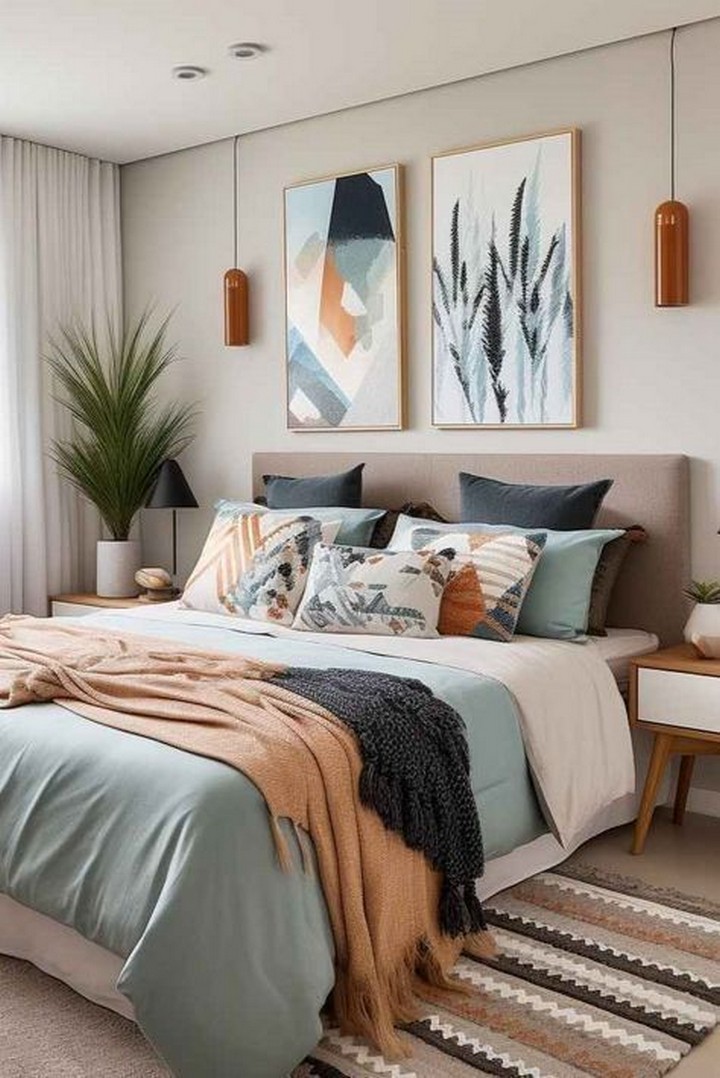
The bedroom represents our most personal space a retreat from the world where comfort, security, and self-expression converge. Warm colors, with their ability to create inviting, cozy environments, provide the perfect foundation for this important room.
Whether you prefer the subtle sophistication of warm neutrals, the earthy groundedness of terracotta and clay, the gentle embrace of blush and peach, or the bold statement of spicy oranges and reds, there’s a warm bedroom color palette perfectly suited to your needs.
Remember that color is deeply personal the warm tones that make one person feel relaxed might energize another. Take time to consider how different warm colors make you feel, and don’t be afraid to trust your instincts when creating your perfect bedroom retreat.
As you reimagine your bedroom with these warm color inspirations, consider which tones resonate most deeply with you, which combinations create the atmosphere you crave, and how these colors might enhance not just your bedroom’s appearance but your experience of rest, relaxation, and renewal.
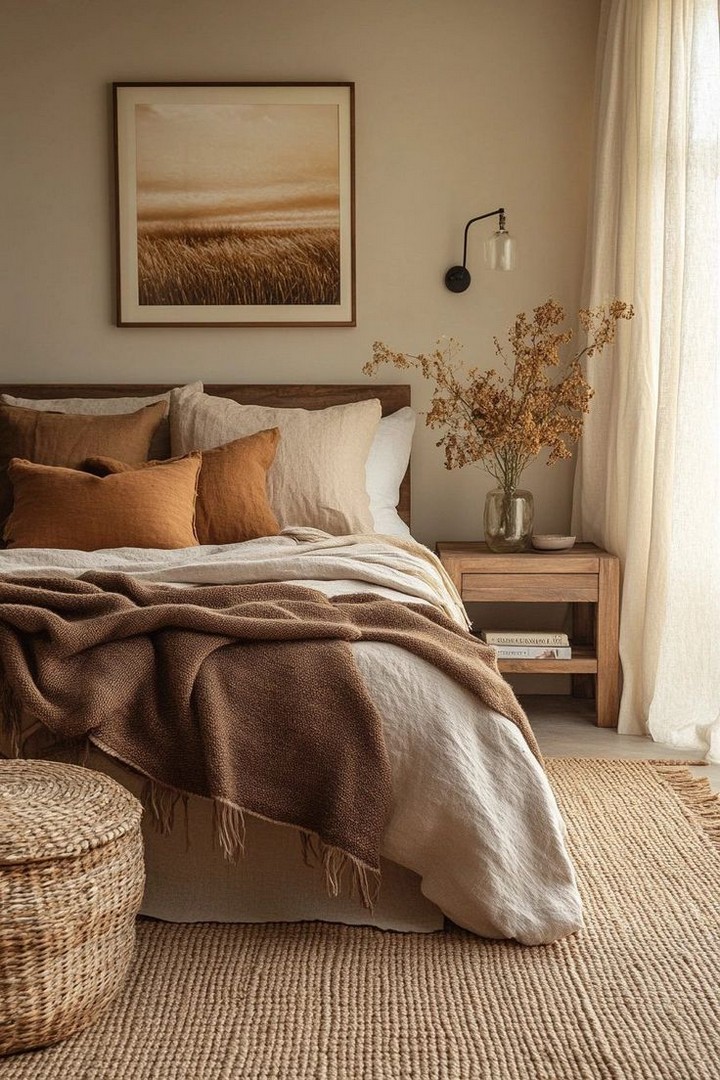
What warm bedroom colors are calling to you? Have you experienced the transformative power of warm colors in your own space? We’d love to hear about your experiences and see how you’ve incorporated these inviting hues into your personal sanctuary. Share your warm bedroom color journey in the comments below, or tag us in your bedroom transformation photos on social media!

